PRESENTING THE FUTURE
The next generation of road construction machinery is here

A PART OF THE ACTION
Government and private industry are providing unique opportunities to those living with a disability

GIVING BACK
We hear how the industry is contributing to community and social initiatives

AUSTRALIA’S ONLY SPECIALIST ROAD MANAGEMENT, CONSTRUCTION AND CIVIL WORKS MAGAZINE JUNE 2023 Official media partners of

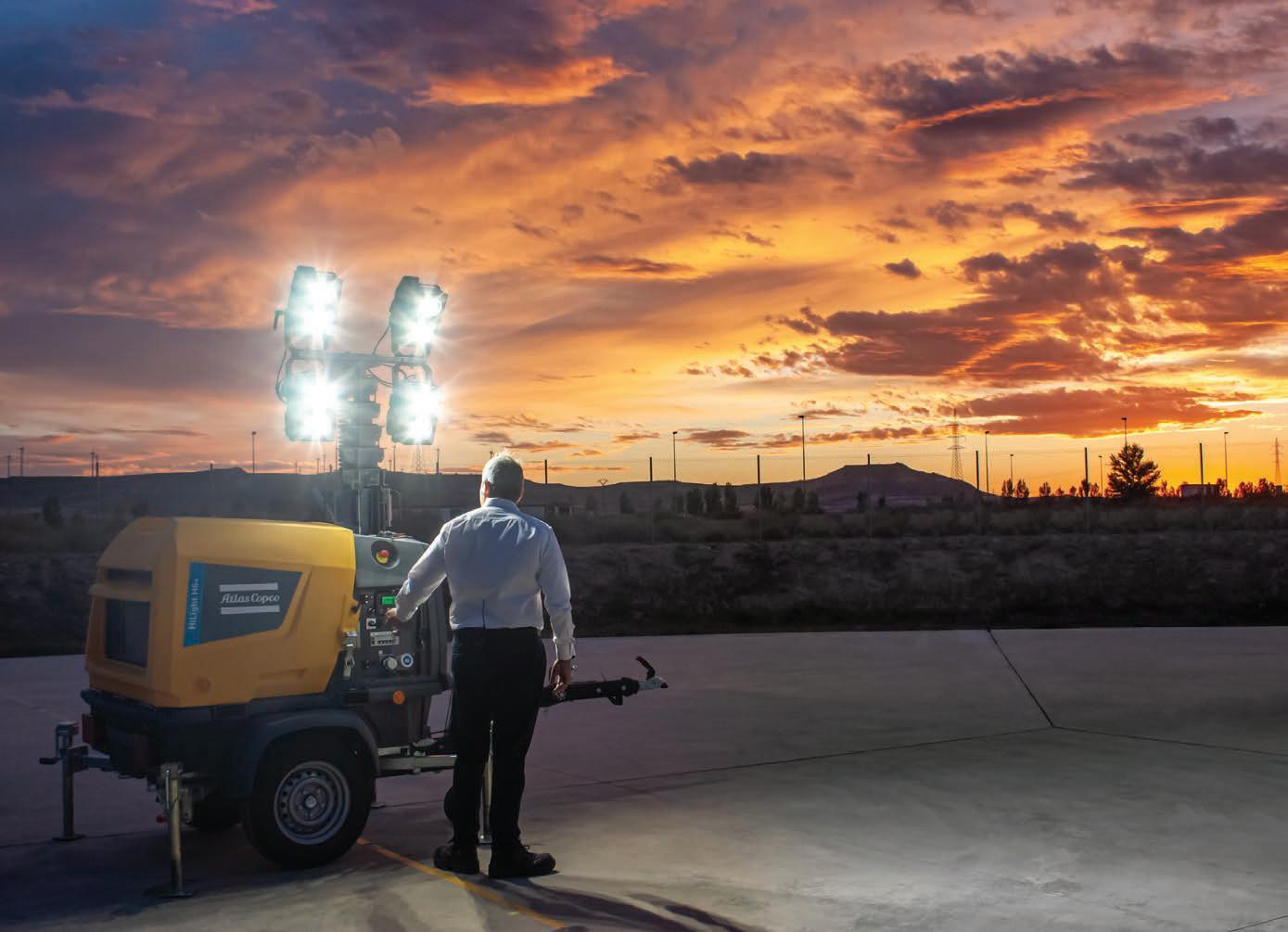

A WIRTGEN GROUP COMPANY Sustainable solutions. www.wirtgen.com/recycling WR 250: The WR model generation from WIRTGEN epitomizes premium quality in soil stabilization and cold recycling – whatever the job. The most powerful machine in the range, the WR 250 even stabilizes heavy, muddy ground efficiently and with the greatest ease. Its high engine performance and extremely robust milling and mixing rotor enable the WR 250 to produce an excellent mix quality even at high advance rates. Take advantage of innovative solutions from the market leader. WIRTGEN Australia Pty Ltd Lot 2, Great Eastern Highway South Guildford WA 6055 T: +61 8 6279 2200 sales.australia@wirtgen-group.com www.wirtgen-group.com/australia
COVER STORY
14 Presenting the future
Astec Industries has introduced a series of new and updated equipment into its range of pavers and planers.
COMMUNITY SUPPORT
18 A part of the action
Distinctive Options Pathways has teamed up with MRPV to provide opportunities for people living with disability.
ROADS REVIEW
20 This month, we asked the industry’s decision-makers how the industry is giving back to the local community.
SUSTAINABILITY
22 Circularity’s foundation
Reflecting on the importance and future of a circular economy for the infrastructure sector.
TECHNOLOGY
26 Stopping the blame game
The NTRO has become a supporter
MACHINERY AND EQUIPMENT
34 The go with Kobelco What sets Kobelco cranes apart.
38 Balanced and intuitive
See how Komatsu’s D85EXi-18 dozer is providing heavy load contractors with a productive and balanced offering.
40 Better together
SANY has become a dynamic producer of heavy machinery, with partnerships helping to extend this growth.
43 Practicality on site
East Pilbara Earthmoving’s John Deere fleet and what it brings to even the toughest of sites.
46 Red hot machine
The Piedmont Regional Fire Department, Italy, is set to have a new valuable ally to help fire crews.
48 Filling the market gap JCB’s Deon Cope and Stephen Gillies of Roadworx sits down with Roads & Infrastructure to detail the new JCB Pothole Pro Hydradig.
INNOVATION
50 Caring, Sharing and Daring COLAS Australia is celebrating its 15th anniversary.
THOUGHT LEADERSHIP
52 The experts in risk management
Shedding a light on reducing impacts caused by contractor insolvencies and project budget inadequacies.
EVENTS
55 Expotrade
The 13th Annual Victorian Transport Infrastructure Conference returns to Melbourne as Victoria’s Big Build.

56 Inside Construction Expo
A sneak-peek into this year’s Inside Construction Expo.
57 No-Dig Down Under
A glimpse into this year’s No-Dig Down Under Conference.
ISC SECTION
59 A real-world problem
Infrastructure Sustainability Council writes how a commitment to sustainability can eradicate unfair work.
AFPA SECTION
62 Bridging the knowledge gap
How AfPA’s 2023 IKT Tour is helping to bring best practice to Australia.
NATIONAL PRECAST SECTION
64 Association membership grows following structure change National Precast provides an update on new and current members.
CONTRACTS AND TENDERS
66 Contracts in brief
An update on some of the contracts and tenders recently awarded or put to market across the sector.
REGULARS
4 Editor’s letter
6 News
In this edition of Roads & Infrastructure, we preview a slew of upcoming infrastructure events happening in Victoria.
roadsonline.com.au 3
JUNE 2023 CONTENTS
COMMUNITY FIRST
WHETHER IT BE THROUGH VOLUNTEERING , mentoring or financial contributions, companies across our industry are aiming to make an impact. In this edition, we shed light on how the industry is giving back.
A shining example of these initiatives is a new partnership between the Victorian Government, Major Road Projects Victoria and support services provider Distinctive Options Pathways, providing equal employment opportunities in the sector for those living with a disability. This forms part of wider works on the $2.2 billion Suburban Roads Upgrade package.
In this month’s cover story, we take a deep dive into the next generation of Astec machinery. Off the back of the company’s presence at the 2023 CONEXPO-CON/ AGG, one of the world’s largest construction shows, Astec is set to release updates to existing machinery and introduce brand new machinery. We sit down with Astec’s Jorge Boil to find out what these new updates and machinery introductions mean for the Australian industry.

The NTRO (National Transport Research Organisation), previously known as the Australian Road Research Board (ARRB), has become keen support of an innovative approach to crash investigations. The ‘no-blame’ crash investigation method ensures that we can learn more from crash investigations, such as potential changes to road infrastructure. We speak to those with experience in using this technique to see how it could influence the future of infrastructure development.
Also in this edition, we preview upcoming events, which present invaluable opportunities for attendees to learn more about the latest developments in our industry, while also making meaningful connections amongst the sector. These include the Victorian Transport Infrastructure Conference, Inside Construction Expo and No Dig Down Under.
This month we also hear from some of the industry’s leading decision makers on how the industry is giving back to the community. Whether it be through infrastructure development, community initiatives or employment programs, the June edition’s Roads Review column highlights the good work being done.
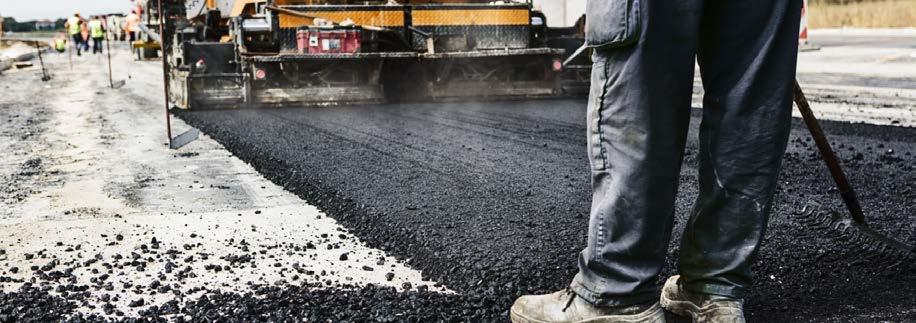
Happy reading!
Tom O’Keane Roads & Infrastructure Magazine
COO
Christine Clancy christine.clancy@primecreative.com.au
GROUP MANAGING EDITOR
Sarah Baker sarah.baker@primecreative.com.au
MANAGING EDITOR
Mike Wheeler mike.wheeler@primecreative.com.au
EDITOR
Tom O’Keane tom.okeane@primecreative.com.au
JOURNALIST
Shannon Paten shannon.paten@primecreative.com.au
DESIGN PRODUCTION MANAGER
Michelle Weston michelle.weston@primecreative.com.au
ART DIRECTOR Blake Storey DESIGN
Bea Barthelson
BUSINESS DEVELOPMENT MANAGER
Brad Marshall brad.marshall@primecreative.com.au
CLIENT SUCCESS MANAGER

Glenn Delaney glenn.delaney@primecreative.com.au
HEAD OFFICE
Prime Creative Pty Ltd 379 Docklands Drive, Docklands VIC 3008 Australia p: +61 3 9690 8766 f: +61 3 9682 0044 enquiries@primecreative.com.au www.roadsonline.com.au
SUBSCRIPTIONS
+61 3 9690 8766 subscriptions@primecreative.com.au
Roads & Infrastructure Australia is available by subscription from the publisher. The rights of refusal are reserved by the publisher.
ARTICLES
All articles submitted for publication become the property of the publisher. The Editor reserves the right to adjust any article to conform with the magazine format.
COPYRIGHT
Roads & Infrastructure Australia is owned and published by Prime Creative Media. All material in Roads & Infrastructure Australia is copyright and no part may be reproduced or copied in any form or by any means (graphic, electronic or mechanical including information and retrieval systems) without the written permission of the publisher. The Editor welcomes contributions but reserves the right to accept or reject any material. While every effort has been made to ensure the accuracy of information, Prime Creative Media will not accept responsibility for errors or omissions or for any consequences arising from reliance on information published. The opinions expressed in Roads & Infrastructure Australia are not necessarily the opinions of, or endorsed by the publisher unless otherwise stated.
4 ROADS JUNE 2023





EXPERTS IN MOBILE PLANT INSURANCE For more information on UAA’s Industrial Special Plant and Procon products, please contact your Insurance Broker or visit www.uaa.com Industrial Special Plant and ProCon underwritten by QBE Insurance (Australia) Limited. ABN 78 003 191 035, AFSL 239545. Underwriting Agencies of Australia Pty Ltd. ABN 86 003 565 302 AFS Licence 238517. Underwriting Agencies of New Zealand Limited (UAA). 4758199, NZBN: 9429040999678. J6663 Our insurance products are tailored to produce a hand crafted solution to meet your business needs The UAA Group has the knowledge, ability and capacity to insure a wide variety of plant and machinery spanning numerous industries. Our experienced claims team has access to a network of the very best expert industry repairers, assessors and suppliers. With over 30 years’ experience, UAA is the largest and most reputable specialist mobile plant and machinery insurer in Australia, New Zealand and globally.
TUNNELLING COMPLETE ON WEST GATE TUNNEL
Tunnel boring is now complete on the West Gate Tunnel Project in Victoria. When complete, the West Gate Tunnel Project will deliver an alternative to the West Gate Bridge, provide a second river crossing, and remove more than 9000 trucks from residential streets. This is expected to also make journeys safer and more reliable with travel times between Melbourne’s west and the city slashed by up to 20 minutes.
There will also be 14 kilometres of new and upgraded walking and cycling paths, and close to nine hectares of new parks and wetlands.
Tunnel Boring Machine (TBM) Bella has broken through in South Kingsville – completing a four-kilometre journey from the west side of the Maribyrnong River under Yarraville to just east of Millers Road near the West Gate Freeway.

Over the past 15 months, TBM Bella
has operated 24/7, excavating soil while installing works are conducted on more than 15,000 individual concrete segments to create the tunnel walls. The significant milestone comes after TBM Vida completed her journey, marking the largest tunnel breakthrough to occur in the southern hemisphere.

Works will continue on building the road deck and installing electrical, lighting and safety systems to prepare both tunnels for completion in 2025.
WA GOVERNMENT INVESTS $125M INTO ELECTRIC BUS PROGRAM
The Western Australian Government is set to expand the state’s electric bus fleet, with the 2023-24 State Budget to confirm a $125 million allocation to the program.
Combined with a $125 million commitment from the Federal Government, the $250 million program is expected to deliver 130 new locally built electric buses and charging infrastructure at key depots.
The 2023-24 State Budget will allocate an initial $22 million next financial year – funded through the Perth Parking Levy – to purchase and build 18 new electric buses and install electric charging infrastructure within

Elizabeth Quay Bus Station. The funding is set to expand on the existing electric bus trial on the Joondalup CAT route, which has seen four battery-electric vehicles supplied through the Public Transport Authority’s existing bus agreement with Volvo to operate within the northern suburbs.
As part of the trial, the Joondalup bus depot received a high-voltage EV charging system which allows electric buses to be recharged overnight through a combination of the existing grid network and a 100kW solar array connected to a large on-site battery storage system.
6 ROADS JUNE 2023
NEWS
TBM
Four of the electric buses have carried more than 250,000 passengers and have saved 230 tonnes of carbon dioxide emissions in one year.
When open, thousands of Victorians are expected to travel through the tunnel each day. Image courtesy of Victoria’s Big Build.


Call us today on 1300 074 249 komatsu.com.au D85EXi/PXi-18 Dozers Equipped with Intelligent Machine Controlproviding heavy load contractors with a productive and balanced Bulldozer Learn more!
FED GOV TO REVIEW MULTIBILLION-DOLLAR INFRASTRUCTURE INVESTMENT PROGRAM
The Federal Government has announced that it will undertake a review of its Infrastructure Investment Program which will aim to ensure projects can provide national significance, while also reduce the amount of delayed and unfunded projects.
This 90-day independent review will consultant state, territory and local governments to consider projects
which are priorities and assess their deliverability and associated costs. This review will be undertaken by Reece Waldock, Clare Gardiner-Barnes and Mike Mrdak.
It is hoped that this review will also increase the functionality of the infrastructure investment pipeline, meaning project stakeholders can have greater confidence in the deliverability and budgets for each project.
$163M BRUCE HIGHWAY UPGRADE NOW OPEN
The Bruce Highway upgrade is now fully open for use, giving safety and improved travel times a boost at the Deception Bay Road interchange in Queensland’s south-east.
The $163.3 million project has officially opened to road users with all six traffic lanes now able to use.
The Bruce Highway Upgrade is the largest road infrastructure program to happen in Queensland. The aim of the upgrade was to improve safety, flood resilience, and capacity along the length and breadth of the highway

between Brisbane and Cairns.
Starting on 1 July 2013, the program was initially developed as an $8.5 billion ten-year commitment jointly funded by the Australian and Queensland governments.

The major interchange upgrade at Deception Bay Road, as part of the highway’s upgrade, included replacing the old, four-lane bridge over the Bruce Highway at Burpengary with two larger, wider bridges to accommodate six lanes of traffic.

The intersections at either end of the
interchange were also upgraded, along with improved highway entry and exit ramps, including new loops.
Active-transport facilities have been built, including shared pathways, a pedestrian bridge and underpass to give bike riders and people walking connectivity across the highway. Over coming months, final works are expected to be carried out to surface the road, install Intelligent Transport Systems and relocate the Heavy Vehicle Interception Site closer to the interchange.
8 ROADS JUNE 2023
NEWS
The 1700 kilometre Bruce Highway is Queensland’s major north-south road corridor. Image courtesy of Department of Transport and Main Roads.
Easing pressure on the sector will help to reduce inflation and develop predictable investment and outcomes for projects.













Low carbon emissions polymer modified binders (PMBs) Puma Energy Bitumen 1800 24 88 66 bitumen.au@pumaenergy.com pumaenergy.com/en/web/bitumen/ Your journey towards net zero starts NOW with our next generation PMBs with biogenic component. Extract biogenic components Roads become perpetual CO2 vaults Integrated with our global supply network Trees capture atmospheric CO2 Puma CarbonBind
LEVEL UP

NEVER IDLE

In this game, there’s no substitute for experience. But finding expert Motor Grader operators can be tougher than the terrain they’ll be tackling. That’s why John Deere is the only player in Australia to be offering Motor Grader automation upgrades to all machines from 2019 onwards. Spec’d out with the latest tech including Machine-Damage Avoidance, Auto-Articulation, Auto-Pass, Auto-Shift Plus, and Blade Stow, less experienced operators can get to grips with the machine double quick, and takes the pressure off your more experienced hands. Take your operation to a whole new level. Check your serial number with your local dealer, today.
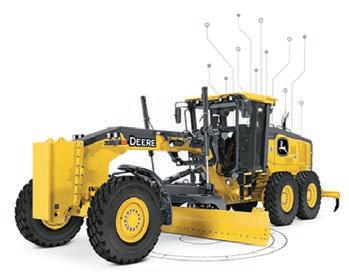

DEERE.COM.AU/SMARTGRADEMOTORGRADERS SCAN TO LEARN MORE
MOTOR GRADER JOB SITE AUTOMATION
AUSTRALIA IS MISSING OUT ON BENEFITS OF RECYCLED ROADS – REPORT FINDS
The report also addresses the environmental, economic and performance benefits that the recycled content would bring. Giving a roadmap to address the primary roadblocks while calling on industry and government to form a partnership to make progress.
Other barriers include gaps in procurement policies and a lack of maturity in some materials markets.

A new research report by not-for-profit organisation, Standards Australia, shows the nation faces barriers to the uptake of recycled content in roads.

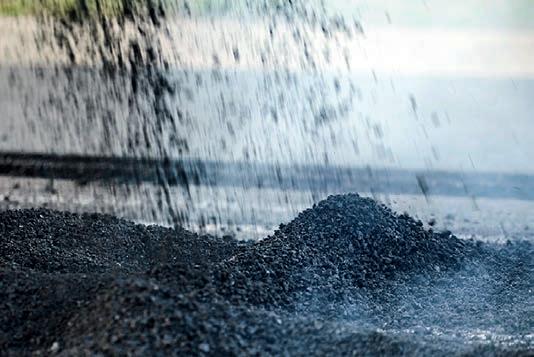
SYDNEY-FIRST
The Standards to facilitate the use of recycled material in road construction report, developed in collaboration with the Australian Council of Recycling (ACOR), found varying specifications between jurisdictions and a lack of nationally known performance-based standards to be significant barriers to the uptake of recycled content in roads.
To reap the benefits of recycled content in roads, the report recommends increasing collaboration between the Australian Government, Standards Australia and industry to create new standards or modify existing standards; and creating guidance material on the use of recycled materials in road construction, its benefits and the enabling standards to improve awareness and overcome misconceptions.
Standards Australia is set to form a committee to inform policy and collaborate with the state and Federal governments to take action.
TRAIN TESTING BEGINS UNDER SYDNEY HARBOUR
Trains are running below Sydney Harbour as the Sydney Metro City & Southwest project enters its next stage – a first in New South Wales’ transport history.
The new metro trains are now travelling in the 15.5-kilometre twin metro railway tunnels, which extends the Metro Northwest Line from Chatswood Station to Sydenham Station, as part of a testing and commissioning program.
CPB Contractors and UGL, both members of the CIMIC Group, are delivering the Line-wide Works for the Sydney Metro City & Southwest project.
The first stage of testing is completed at low speed, with trains manually driven at a maximum speed of 25 kilometres per hour. The trains then gradually move into high-speed testing, where the trains reach a maximum speed of 110 kilometres per hour.
Each train is also set to undergo acceleration and braking testing on the newly built track and complete a series of system checks to ensure it can perform reliably under operating conditions.
On-track train testing and commissioning is set to continue
throughout 2023, ahead of passenger services starting through the Sydney Central Business District in 2024. Once passenger services start through next year, customers will be able to travel from Central Station to Chatswood Station in 15 minutes, from Martin Place Station to Sydenham Station in 11 minutes
Trains are set to reach 110km/h when operational. Image courtesy of NSW State Library.
and from Victoria Cross Station in North Sydney to Barangaroo Station in just three minutes on a fast a reliable metro service.
This railway crossing below Sydney Harbour is expected to move more people across the Harbour in peak hour than the Sydney Harbour Bridge and Sydney Harbour Tunnel combined.

roadsonline.com.au 11
NEWS
Reduction in environmental impact and improved performance of materials are some possible benefits. Image courtesy of Sustainability Victoria.
PUBLIC OPINION SOUGHT FOR MICKLEHAM ROAD UPGRADE
Public feedback is set to shape development options for the Mickleham Road Upgrade in Victoria.
Stage Two of the Mickleham Road Upgrade will aim to improve the safety, travel times, reduce congestion and boost capacity for the connection between Dellamore Boulevard and Craigieburn Road.

Feedback from the public will help to inform planning by granting an insight into how locals use the road, their views on safety and traffic flow, any concerns they have and what the Victorian Government should consider in its planning.

This feedback will then be used to inform a business case or the potential future upgrade and will build upon feedback received on the first stage of the project, between Somerton Road and Dellamore Boulevard.
Works on the project are expected to be completed in 2024.
65 PER CENT CONSTRUCTION MILESTONE REACHED ON AUSTRALIA’S LARGEST WEIR

Construction on Australia’s largest weir, the $367.2 million Rookwood Weir project in Queensland, is now more than 65 per cent complete.
The $367 million project of the new weir on the Fitzroy River near Rockhampton includes wider works to upgrade existing
infrastructure to support the construction and operation of the new weir.
The project is jointly funded by the Federal and Queensland governments and will include construction of an uncontrolled concrete gravity weir on the Fitzroy River, downstream of the
Mackenzie and Dawson river systems, structural works on the right riverbank including the installation of intake screens, a low flow outlet and fishlock and earth fill and concrete abutments.
It’s expected to provide greater water security to help grow and diversify agriculture in the region. It will also support industrial growth in the Gladstone, Capricorn Coast and Rockhampton regions.
More than 81,000m3 of the required 130,000m3 of concrete has now been poured for the weir’s foundations, abutments, monoliths and spilling basin.
The design and construction of the weir is being managed by: Sunwater –construction authority, operator and water marketer, GHD – designer and McCosker Contracting and ACCIONA as the constructor.
Sunwater expects construction on the weir to be finished later this year, weather permitting.
12 ROADS JUNE 2023 NEWS
Artist impressions of Stage One of the Mickleham Road Upgrade. Image courtesy of Hume City Council.
Rookwood Weir proposed 3D plan. Image courtesy of Sunwater.
Donald Cant Watts Corke is one of Australia’s leading providers of independent end-to-end project services

Providing a wide range of end-to-end project services for over 50 years, we have proven our expertise and reliability in helping ensure the successful delivery of infrastructure projects throughout Australia. Through a holistic approach, we provide you valuable advice and assurance with our quantity surveying, project management, advisory, and engineering services, tailored to ensure your project reaches its full potential.
Our in-depth understanding of the infrastructure sector enables us to develop the right solutions that address the complex needs of your project. We are committed to delivering outstanding results for Australia's future.
Learn more at dcwc.com.au

Delivering integrated solutions ADELAIDE BRISBANE CANBERRA
DARWIN MELBOURNE NEWCASTLE PERTH SYDNEY TOWNSVILLE
PRESENTING THE FUTURE
ASTEC INDUSTRIES HAS INTRODUCED A SERIES OF NEW AND UPDATED EQUIPMENT INTO ITS RANGE OF PAVERS AND PLANERS. JORGE BOIL, BUSINESS LINE MANAGER – INFRASTRUCTURE, OUTLINES WHAT THESE DEVELOPMENTS MEAN FOR THE AUSTRALIAN MARKET.
Astec Industries has always had a focus on pushing the envelope when it comes to paving and profiling equipment.
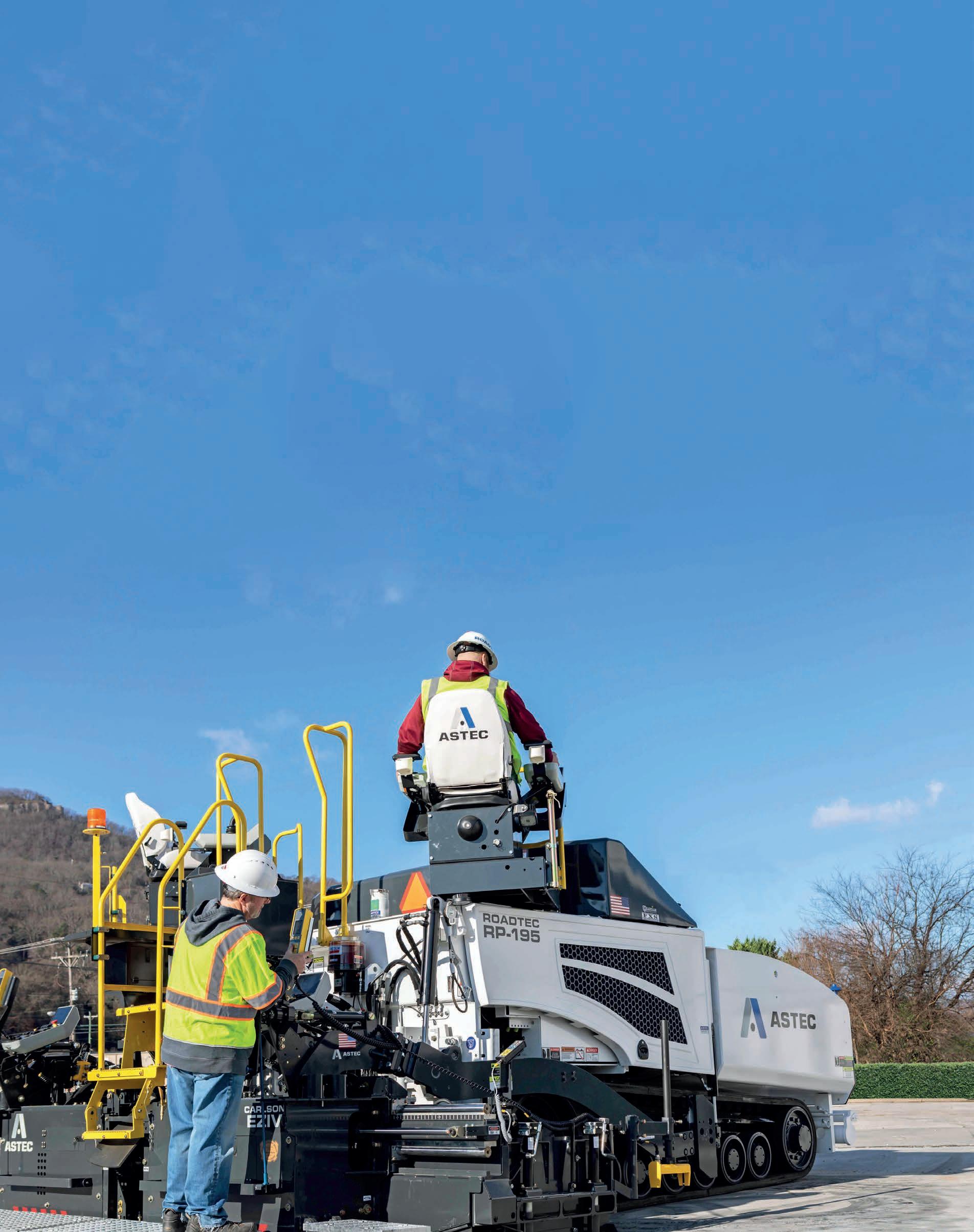
Utilising its global expertise and over five decades of experience, Astec has introduced innovative technologies into each new
generation of equipment in the roads and infrastructure sectors.
The company’s latest innovations were on show at the recent CONEXPO-CON/AGG in Las Vegas, one of the world’s largest construction trade shows.
Astec’s Jorge Boil explains that
14 ROADS JUNE 2023
the event was the perfect opportunity to showcase the company’s offerings.
“We were able to present all our products, not only from the infrastructure side of the business, but also aggregate, mining, quarrying, asphalt and concrete plant manufacturing and more,” Boil says. “In short, we showcased our ability to supply equipment for every application from Rock to Road.”
Astec debuted its new RX-405 and RX505 cold planers in Las Vegas, as well as its completely redesigned Roadtec RP-175 and RP-195 highway-class pavers.

THE NEXT GENERATION
The RX-405 and RX-505 cold planers (the model number indicates the available horsepower) have a strong focus on flexibility.
As Boil explains, these new machines ensure the company can supply contractors working on projects of all sizes, including those with limited space.
“We’ve always been strong when it comes to larger works,” he says. “But previously we didn’t have the lightweight options that some of our customers need. These new cold planers fit that bill. They’re very versatile machines.”
With cutting depths from two to 13 inches,
the RX-405 and RX-505 have been purposebuilt for contractors looking for that smaller, lightweight option.
Both feature Astec’s renowned dual-operator platforms and include simplified controls and a multi-function joystick, as well as expanded on-board diagnostics.
The RX-405 and RX-505 also include Astec’s Automated Control of Elevation (ACE) grade control. With this system, sensors measure the depth and slope of the ground surface while hydraulic pressures automatically adjust the elevation of the machine to ensure a precise and consistent depth.

Grade and slope parameters can also be adjusted in real time via the operator’s upper control station or at ground level.
As Boil explains, with versatility having been such a big focus for these machines, adaptability when it comes to drum options was a must.
“The RX-405 supports different drums sizes and the drums themselves are easily interchangeable. A hinged door on the side opens so the operator can slide in the required drum,” he says.
Drum options include double hit and speciality cutter drums, as well as designs
roadsonline.com.au 15 COVER STORY
“WITH CUTTING DEPTHS FROM TWO TO 13 INCHES, THE RX-405 AND RX-505 HAVE BEEN PURPOSE-BUILT FOR CONTRACTORS LOOKING FOR THAT SMALLER, LIGHTWEIGHT OPTION.”
The RP-175 and RP-195 new generation pavers come with a variety of upgrades and changes, including improved maintenance, reduced noise during operation and increased efficiency.
Astec Industries’ RX505 profiler at ConExpo 2023.
that produce wide- and fine-spaced milling patterns.
In terms of safety, both the RX-405 and RX505 come with rear object detection, another automated feature that stops the cold planer if a person or object is detected behind the machine while in reverse. Contractors at ground level can also disable reverse if necessary.
REDESIGNING THE RENOWNED
Joining the new planers at the 2023 CONEXPO-CON/AGG were the radically redesigned RP-175 and RP-195 F-series rubbertracked pavers.
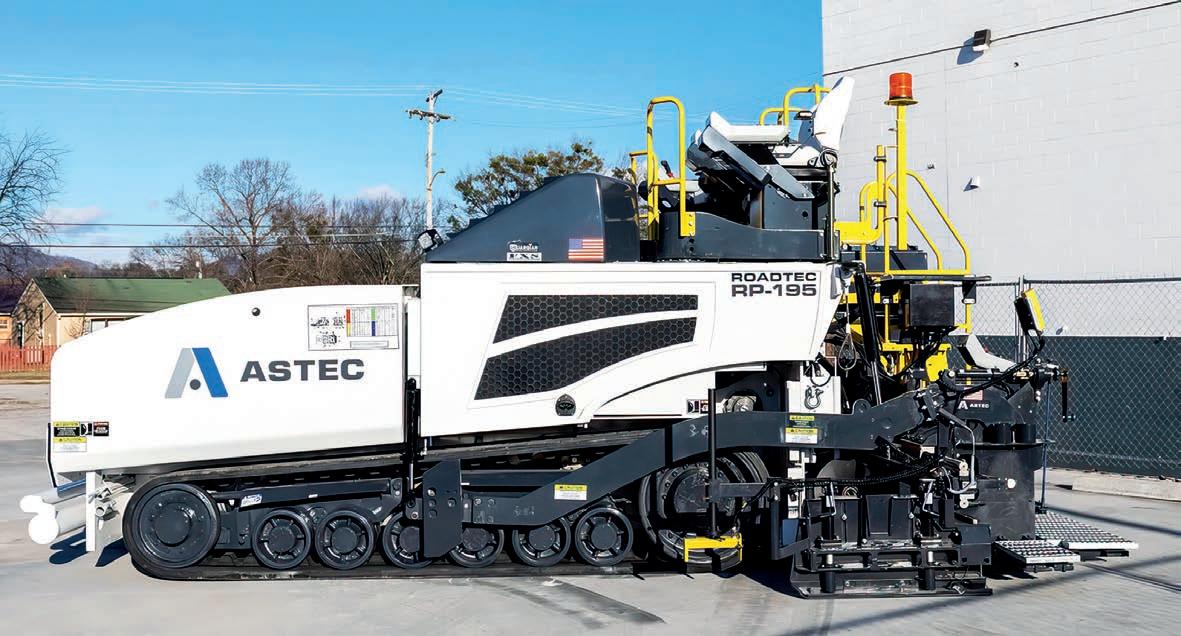
According to Boil, Astec’s desire to update the machines was born from a commitment to improving the operator experience. He says the new models build on already successful products in Australia.

The upgrades include a sleeker overall design, enhanced operator platforms and controls, and easier maintenance.
“The previous model was updated around seven or eight years ago, so it was time to introduce some new innovations,” Boil says.
“One of the big changes has been to reduce the noise of the RP-175 and RP-195 F during operation.”
Astec achieved this by moving the generator off the screed and placing it inside the engine compartment. As a result, the overall noise of the station has been reduced by 15 to 20 per cent.
An added bonus of the move was an increase in power, as the paver’s hydraulics
are no longer required to run the generator. The size of the generator itself has also been increased.
“It’s much easier to maintain now that it’s all located in one area in the engine compartment,” Boil says.
Shifting the generator from the screed has also made it easier for operators to change screed plates and perform other screed maintenance.
“These new pavers still support Carlson screeds which have been very popular in Australia and America,” Boil says.
He adds that both the RP-175 and RP-195 F-series share components, making general maintenance more convenient.
“If you’re a fleet manager running both units, you don’t have to carry as many parts in order to maintain both pavers,” he says.
The generator move has also allowed for a larger redesign of the undercarriage of both the RP-175 and RP-195 F. This has resulted in the streamlined design with fewer components, and, therefore, reduced maintenance costs in the long run.
KEEPING COOL AND SAFE
Another substantial change is a redesign of the pavers’ cooling package, updating the previous, single-fan system.
“There are two cooling packages in these machines, one for the hydraulic system and a separate one for the engine,” Boil says. “These are mounted on top of the machines.”
The change has not only redirected the cooling airflow away from the operator and
ground staff, but has also resulted in quieter operating noise.
The focus on maximising comfort and safety has also led to significant improvements in visibility.
The operator platforms of both pavers feature seats with hydraulic swing capabilities, providing enhanced line of sight from either side and 360-degree visibility.
“Operators can now see material coming into the front hopper and, with the dual operator platforms, they can easily switch from one side to the other,” Boil says.
“There’s also excellent visibility to the screed at the back and to the auger tunnel.”
Another change that has further enhanced the safety of the new models is the relocation of the pavers’ engine exhaust system.
“The exhaust has been moved towards the front and top of the machine. As well as eliminating what was a blind spot for the operator, fumes have now been diverted away from the operator and ground crew,” Boil says.
As with most Astec equipment, the RP-175 and RP-195 F-series pavers and the RX-405 and RX-505 cold planers are powered by the latest Cummins engines, which produce fewer emissions with no penalty in performance.
AUSTRALIAN RELEASE
Boil says the industry can get their hands on the new equipment from mid-2024.
“These machines have been designed specifically for the style of paving we do here in Australia,” Boil says. “So they’ll slot straight into our market.”
16 ROADS JUNE 2023 COVER STORY
The industry is set to get its hands on the new generation pavers from mid-2024.

Our market proven CKS range is reliable, efficient, economical and built to exceed expectations. ORDER NOW! With limited production slots, talk to us today to secure your next CKS Lattice Boom Crawler. Plus we’ve got you covered with full backup sales, service, parts and support Australia wide with TRT. 07 3890 8800 www.trtaustralia.com.au TRT are your Asia-Pacific agents for Kobelco. Talk to us today about your next project!
A PART OF THE ACTION
SUNBURY DISABILITY, AND SERVICES SUPPORT PROVIDER DISTINCTIVE OPTIONS
PATHWAYS, HAVE TEAMED UP WITH THE VICTORIAN GOVERNMENT AND MAJOR ROAD PROJECTS VICTORIA TO PROVIDE EQUAL EMPLOYMENT OPPORTUNITIES TO LOCALS LIVING WITH A DISABILITY.

According to the Australian Institute of Health and Welfare, working-aged people with disability have a lower employment rate than those living without disability.
That’s a comparison of 48 per cent (or 984,000), to 80 per cent (or 11.3 million), respectively.
Distinctive Options (DO) Pathways is one organisation dedicated to flipping the script on this figure. Its partnership with Major Road Projects Victoria, along with construction partner Winslow, is one example of encouraging employees living with disability to get amongst the action.
DO Pathways, based in Sunbury, employs more than 18 people,
empowering them with skills, confidence, and opportunities to assist them in reaching their full potential. The company generates more than 1000 hours of paid work each year for its employees.
Because of this partnership, 12 of DO Pathways’ employees are set to play a pivotal role in spreading the word about the Sunbury Road Upgrade, by delivering more than 100,000 construction newsletters and notices for the northwest Melbourne project.

Peter is one of DO Pathways employees working with the upgrade says he loves the opportunity to get out and meet new people in the community.
“They really appreciate it. Sometimes
you talk to them, sometimes you hand it to them at the mailbox,” he says. “I like coming to work because I like meeting good friends of mine – they’re like part of my family.”
The project’s investment in DO Pathways will help the company hire and train further staff, with an estimated 30 extra positions to be created. It is also expected to give existing team members permanent long-term employment to support their confidence in the workforce.
Josh Bull, Sunbury MP, says the program and partnership is an incredible experience for participants.
“[It] will set up individuals in our community for future opportunities in
18 ROADS JUNE 2023
Distinctive Options Pathways employees delivering project notices to Sunbury locals.
the workplace and help them maintain their independence,” Bull says.
The Sunbury Road Upgrade is a part of the $2.2 billion Suburban Roads Upgrade package and is set to improve local connections and journey reliability for more than 25,000 drivers who use the road every day.
The works will include the construction of extra lanes on Sunbury Road between Powlett Street and Bulla-Diggers Rest Road, adding traffic lights, new walking and cycling connections and building a new bridge over Jacksons Creek.
This partnership between DO Pathways and MRPV on the upgrade is also supporting the Victorian Government’s Social Procurement Framework.
This framework uses State Government buying power to drive positive social, economic, and environmental outcomes–such as creating meaningful job opportunities for jobseekers with disabilities. It is also providing opportunities for social initiatives, Australian Disability Enterprises and


Victorian Aboriginal businesses, making a difference for major rail and road projects in Victoria.
So far, DO Pathways’ workers have spent more than 250 work hours on construction notice delivery.
The Sunbury Road Upgrade is expected to be completed in 2025.

COMMUNITY SUPPORT roadsonline.com.au 19
“DO PATHWAYS, BASED IN SUNBURY, EMPLOYS MORE THAN 18 PEOPLE, EMPOWERING THEM WITH SKILLS, CONFIDENCE, AND OPPORTUNITIES TO ASSIST THEM IN REACHING THEIR FULL POTENTIAL.”
Everyone plays a key role in the delivery of the Sunbury Road Upgrade.
The partnership between DO Pathways and MRPV aims to make a difference in the lives of people living with disabilities.
ROADS REVIEW
THIS MONTH, WE ASKED THE INDUSTRY’S DECISION-MAKERS, ‘IN WHAT WAYS IS THE INDUSTRY CONTRIBUTING AND GIVING BACK TO THE LOCAL COMMUNITY?’

SHERIDAN JONES, GENERAL MANAGER, MARKETING & COMMUNICATIONS –COATES

Each year Coates supports local communities with access to equipment and services, as well as our national charities of choice via the Coates Foundation. Throughout our 10year partnership with the NSW Rural Fire Service (RFS), we’ve delivered critical temporary infrastructure and project support for communities in distress. We’ve also partnered with The Clontarf Foundation, which exists to improve the education, discipline, self-esteem and life skills for young First-Nations men, providing them with work experience, apprenticeships and employment at Coates. Our teams get involved in meaningful community moments. From the board to the branch, giving back to the communities we operate in is something we are all extremely proud of.
CRAIG MOSS, MANAGER CAPABILITY AND DEVELOPMENT – AUSTRALIAN FLEXIBLE PAVEMENT ASSOCIATION



Transport infrastructure is fundamental to our quality of life. It connects us to our jobs, health services, education, families, and social networks. It allows us to travel safely and permits efficient transport of goods, such as fresh food, clothing, and other essential freight. Road construction and maintenance activities stimulate significant direct and indirect employment opportunities in local communities, boosting local economies. The roads sector supports local communities by promoting sustainable practices and reducing the impact on the environment.
NIRAJAN SHIWAKOTI, ASSOCIATE PROFESSOR – RMIT UNIVERSITY

Many people don’t realise how much the road and infrastructure industry contributes to the local community. There is the obvious: jobs that develop critical infrastructure, creating a more connected, mobile and accessible society. The industry is also moving us towards a sustainable and tech-enabled future. The $222 million Mickleham Road Upgrade in Melbourne demonstrates how innovative road construction can lead to a significant carbon footprint reduction. The focus of my research is how industry is preparing to meet the infrastructure needs of automated vehicles to ensure public safety – especially how infrastructure communication and vehicles can be protected from cyber-attacks.
If you or someone at your organisation is an industry leader and would like to be a part of this monthly column in 2023, please get in touch with Editor, Tom O’Keane: tom.okeane@primecreative.com.au
ROADS REVIEW
20 ROADS JUNE 2023





MOVING TOMORROW, TODAY WWW.SANYAUSTRALIA.COM.AU WWW.SANYAUSTRALIA.COM.AU
FOUNDATION CIRCULARITY’S
CLOSE THE LOOP’S STEVE MORRISS REFLECTS ON THE IMPORTANCE OF A CIRCULAR ECONOMY FOR THE INFRASTRUCTURE SECTOR, WHILE ALSO HIGHLIGHTING THE OPPORTUNITIES FOR FUTURE IMPROVEMENT BY INDUSTRY.
The term ‘circular economy’ may have only accelerated in use in recent times, but the core principle has been around since the 19th century.
The system outlines a process of production and consumption, where waste is minimised by keeping resources within an ecosystem. The general concept of the circular economy consists of three pillars or key focuses: design out waste, keep products or materials in circulation and to regenerate natural systems.
According to the United Nations Environment Programme, infrastructure is responsible for 79 per cent of all greenhouse gas emissions. So why has it taken so long for the infrastructure sector embrace a circular economy?
Steve Morriss, Head of Circular Economy at Close the Loop, is a member of a growing cross section of passionate advocates within the infrastructure sector, who have identified the need and benefits of implementing a circular economy.
“The industry is working very hard. I’m very proud to be part of the infrastructure space in Australia, because whilst the sector is one of the largest contributing industries to climate change in the world,
it seems as though the industry is taking a charge on mitigating those carbon impacts,” Morriss says.
He adds that contributions from the industry, such as the developments being made by Close the Loop, are helping to turn the tide in recycled material use.
“From my perspective, it’s not a stretch, some of these products are available now. It’s about educating the team, especially procurement as there are products out there now that are better than their virgin equivalents which means lower costs over whole of life, and lower carbon outcomes,” Morriss says.
“Close the Loop is a global pioneer in the use of recycled plastics in roads. The fact that we’re based in Melbourne and can serve the Australian market makes us extremely proud.
“We’ve been on a 10 year journey to optimise the performance of asphalt including TonerPlas. Close the Loop is a sustainability business at its core, everything we do contributes to sustainability and TonerPlas is our contribution to the infrastructure sector.”
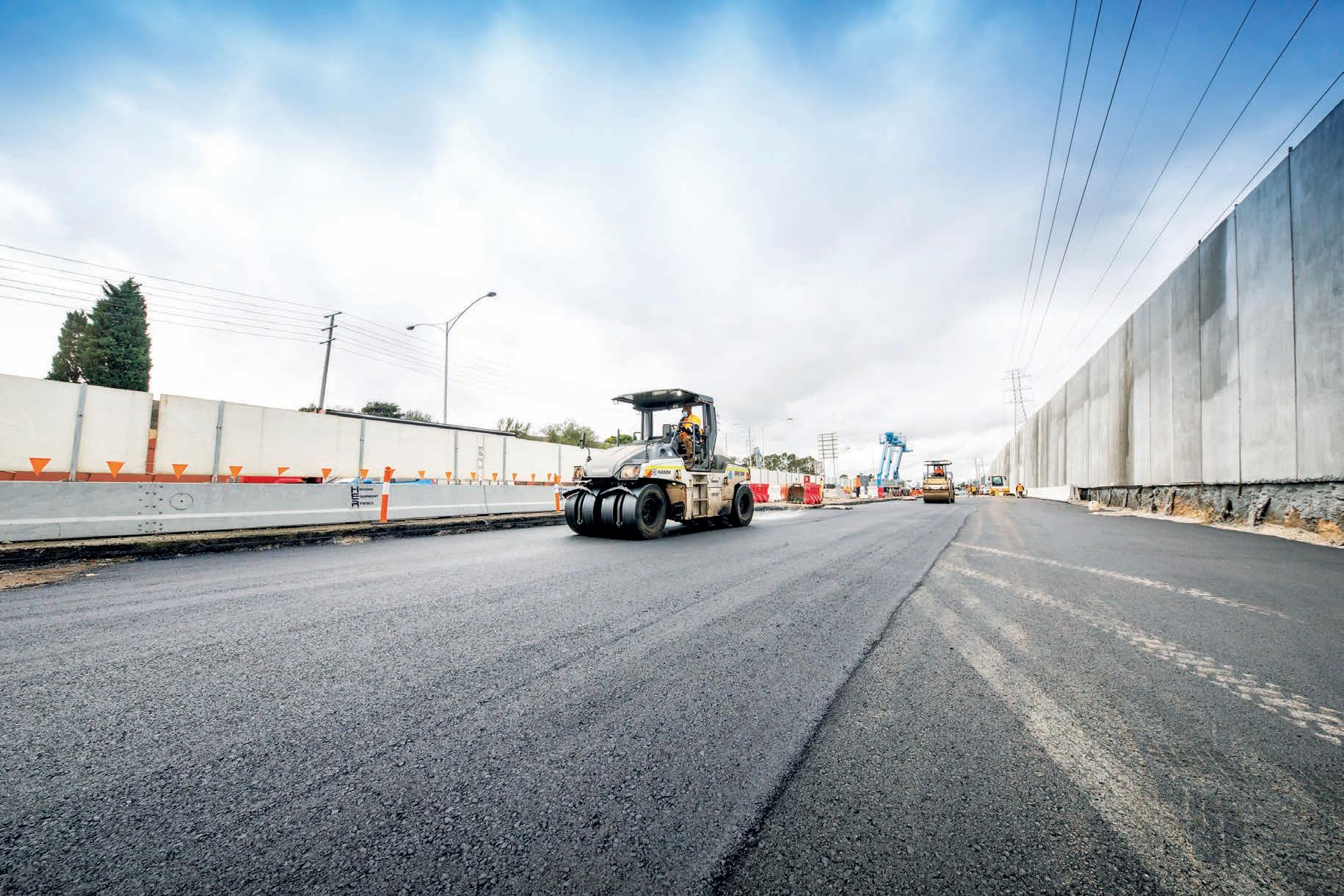
Morriss also takes pride in supporting the circular economy on a personal level.
“I’m constantly working with the broader community and contributing, because if there’s one rule I’ve learnt, it’s that what you get out of life depends on what you give,” he says.
DESIGNING FOR CIRCULARITY
“To speed up the infrastructure sector’s transition to circularity, we need uniform performance based specs that do not lock out innovative new products including those made from recycled materials,” Morriss says.
Methods and tools such as the Infrastructure Sustainability Council’s Material Circularity Indicator (MCI) are helping to achieve the first pillar of circularity (designing out waste).
The MCI was developed by the Ellen MacArthur Foundation and allows companies to identify the circular economy aspects of their products and materials.
Other tools such as the New South Wales Government’s sustainable design guidelines are helping to clarify and reward contractors who choose to use sustainable materials and methods. Morriss says the current
22 ROADS JUNE 2023
structure rewards those who make sustainable commitments.
“It gives you a strategic competitive advantage when pitching for major road projects,” he says.

These benefits go far beyond a company’s bottom line, as Morriss adds
“The earth is constantly mined of non-renewable, finite resources by our reckless over consumption lifestyles. There is an urgent need to keep these raw materials in circulation for longer,” he says.
“We can minimise our need to continuously extract non-renewable resources. If we keep pillaging at the rate in which we are right now, then future generations will have no raw materials to work with.”
MAINTAINING CIRCULARITY
Close the Loop Group CEO Joe Foster says the company is well placed to provide sustainable alternatives to market, most of which are produced by incorporating used and discarded items.
“The unique position of Close the Loop Group is that we not only recover and recycle materials, but we manufacture packaging at start of life and have the
opportunity to influence people at the beginning of the supply chain to design with simpler, higher-value materials which provide better recycling outcomes,” Foster says.

One example of this is Close the Loop’s TonerPlas. TonerPlas is an asphalt additive made from fully recyclable sources. The pelletised product can be incorporated into an active asphalt plant mix to produce a polymer modified binder. According to Morriss the performance of asphalt including TonerPlas outweighs the performance of standard asphalt.
This is thanks to improvements in deformation resistance, resistance to wear, and improved rejuvenating properties for high RAP (Recycled Asphalt Pavement) mix designs. This is also on top of reduced risks of leachate or microplastics being released in the mix.
These performance boosts have also been certified, thanks to testing from reputable organisations within the industry, such as Downer and the New South Wales Environment Protection Authority.
This has also been further supported through a study by RMIT, in conjunction with Austroads. The study found that roads
roadsonline.com.au 23 ENVIRONMENT & SUSTAINABILITY
“WE CAN MINIMISE OUR NEED TO CONTINUOUSLY EXTRACT NON-RENEWABLE RESOURCES. IF WE KEEP PILLAGING AT THE RATE IN WHICH WE ARE RIGHT NOW, THEN FUTURE GENERATIONS WILL HAVE NO RAW MATERIALS TO WORK WITH.”
Close the Loop is actively contributing to the circular economy across the whole of Australia.
Developments from Close the Loop are helping to increase the sustainability of asphalt, and by extension, road production.
which contain recycled plastics as part of the wet method (which includes TonerPlas) can create greater adhesion between stone and binder.
“No Infrastructure project and its contractors will use recycled content unless it can be proven to be as good or better than the materials being replaced. That’s why we are proving the benefits of TonerPlas via independent materials circularity modelling,” Morriss says.
“We’ve just started on this journey, but we are measuring the Materials circularity Index of roads with and without
TonerPlas. Initial data is showing a 25 per cent improvement in materials circularity with TonerPlas, mainly due to improved elasticity leading to longer road life.”
REGENERATING CIRCULARITY
The third pillar of circularity (regenerative natural systems) pushes businesses to become full circular, not with their own contributions to the market, but instead within their own operations.

Morriss defines regenerative business as a simple question; “Is the world a better place for having had your business in it?”
“I’m on a mission to expand that definition to include a broader scope for regeneration,” he adds.
Regenerating waste streams is just one way in which Close the Loop is working to become a regenerative business, predominantly through the form of not looking at waste materials as end products. Instead, as opportunities to create new products.
Another way in which Close the Loop is progressing towards being a regenerative business is regenerating communities. The company is helping to create new employment opportunities while also supporting local economies by introducing sustainable materials and projects for communities.
One example of this is Close the Loop’s landmark deal with the Greater City of Bendigo in Western Victoria.
As part of the deal, the council will use TonerPlas as part of its local road construction, with the volume that will be used to match the equivalent weight of soft plastics, which have been collected from the Bendigo region and diverted from landfill. This material will be sent to Close the Loop for processing and used back in TonerPlas.

“The City of Greater Bendigo landfills are coming to the end of their life and the council is committed to recycling and reuse of waste instead of landfill. This creates more jobs, builds local pride and demonstrates a commitment to transitioning to a circular economy,” Morriss says.
“It’s great for the local people and paves the way for other councils around the country to follow suit.”
GET IN TOUCH
For project managers who may be wondering what the first steps are to embracing sustainability, Morriss says education is key.
“It’s important to become fluent in the language of the circular economy. There’s a lot of activity and groups that we can join, there’s so much going on. This is coming like a freight train,” he says.
“Once more education has begun, more doors and opportunities will come. We should be aiming to be part of the solution, not those waiting for the solution.”
If you’re interested in playing your role in the circular economy, visit: https://www.closetheloop.com.au/
24 ROADS JUNE 2023 ENVIRONMENT & SUSTAINABILITY
TonerPlas is added at the asphalt plant with no change to the workability or laying equipment.
MATERIALS CIRCULARITY IN ACTION
Above: Circular economy butterfly diagram shows product and materials circularity pathways.
For over 60 years we have only had one thing in mind: making measured values ever more precise. But we also never lost sight of the need for human values, too. By combining these it makes a remarkable radar level sensor possible. The best value there is: VEGAPULS 6X.

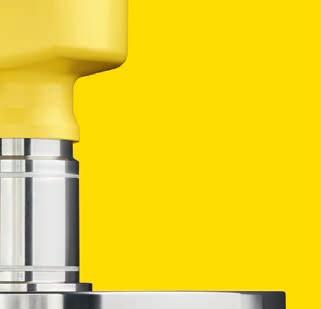

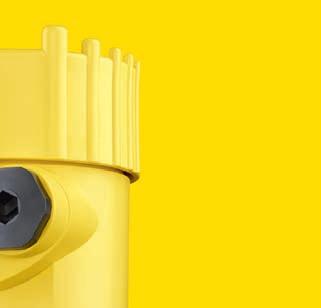

WE LOVE RELIABLE VALUES. JUST LIKE OUR RADAR LEVEL SENSOR. THE
OUT NOW!
6X ®.
VEGA. HOME OF VALUES. www.vega.com/radar
BLAME GAME STOPPING THE
According to the Transport Accident Commission, if no changes are made to the current road trauma climate, another 2500 people are expected to die over the next 10 years, with another 50,000 to be hospitalised with lifethreatening injuries.
The roads and infrastructure sectors have recognised the need to make a change. The development of new technology and techniques to combat escalating road trauma statistics has been led by companies such as the NTRO.
The Australian Road Research Board (ARRB), now the NTRO (National Transport Research Organisation), has been a pioneer in the improvement of current and new technologies for Australian roads.

Safety is embedded into the operations of the company across both Australia and New Zealand. From road safety audits to road design and traffic engineering, the company has a firm expertise in delivering suitable
solutions for metropolitan and regional roads nation-wide.
This expertise has enabled the NTRO to identify a gap in the sector’s offerings, particularly when it comes to road crash investigations.
“The ‘no-blame’ crash investigation method looks at road crashes from a broad context of what factors have contributed to both the cause and the severity of the outcome,” says David McTiernan, National Discipline Lead – Transport Safety.
“As opposed to a more traditional crash investigation process, which is really about identifying from a legal perspective who caused the crash.”
The no-blame investigation approach, what the NTRO also refers to as the ‘safe system approach’ incorporates factors such as the road, the vehicle, the environment, the driver and more to determine what contributed to an incident.
“We know that we can’t stop every crash
on the road network, but if we can convert some of those serious crashes into less severe outcomes that would be great. We need to take a holistic view into all of the contributing factors,” McTiernan says.
“It informs our application and informs our knowledge of where risk exists. Then we’re better set up to mitigate that risk wherever it may be across road infrastructure. It’s part of making our network safer.”
Gavin Lennon, Senior Technology Leader, Safer Smarter Infrastructure says no-blame crash investigations differ from official police crash investigations. It aims to provide long-term learnings for future infrastructure developments, instead of identifying the guilty party.
“Obviously someone’s at fault in a car crash and we need to find who’s at fault. But as a society, we don’t learn from the punishment of one individual,” Lennon says. “The blameless approach really looks at a systematic investigation, which then
26 ROADS JUNE 2023
THE NTRO (PREVIOUSLY KNOWN AS ARRB) HAS BECOME A SUPPORTER OF BLAMELESS CRASH INVESTIGATIONS, WHICH ENSURE THAT LESSONS CAN BE LEARNT FROM EVERY CRASH AND NEAR MISS ON AUSTRALIAN ROADS.
allows us to build on our knowledge and processes.
“We look at the aspects that we can control to some degree, like the road environment and the infrastructure around it. We need to look at how we can have a greater understanding of how people interact with that infrastructure in order to make it safer.
“That way we can enact change for the
future, to encourage improvements like better driving habits.”

Unlike crashes in the aviation and rail transport industries, not every incident and near miss on Australian roads is investigated. As such, McTiernan believes embedding noblame crash investigations is the first step.

“Currently, it’s primarily seen as a research function when it comes to road incidents,” he says. “Investigations for other transport modes already incorporate a similar structure to the no-blame system, with aviation being the most advanced at this stage.
“These types of investigations do not absolve the human element at all. It’s also not trying to usurp police investigations and the process that society needs to uphold the law. It’s about learning, so we can have a better road transport system in the future.”
Lennon – himself a former civilian member of the police force – concurs, saying that while adoption will take time, the results will be “well worth it” in the long run. He says education and training will also play a key role.


“One of the major differences between these modes is the volume of traffic-related crashes, which is more significant than rail for example,” he says. “I think some people can be daunted by the thought of investigating and learning from every incident.
“At the end of the day, the police attend to just about every crash, from property damage to fatalities. So we need to train and educate people who attend these scenes to gather the right information. Then we can look at how we collect that information and how we can use it.”
McTiernan adds that such a system will have meaningful benefits for local governments and road authorities.
“Road managers and road agencies ultimately have this potential liability, so it would be invaluable for them to be made aware of how to manage risks on their
network through this crash investigation process,” he says.
“If they could work in parallel with the police to understand what’s going on, they’re going to be better equipped to manage these risks. Engineers need to be trained in the whole process, not just how to maintain or design roads.
“But also, what happens when something goes wrong; to look at these incidents from a risk management perspective and ask themselves ‘right, these are the contributing factors across that vehicle, road, person, space etc’, to implement a better response.”
Learnings from using these investigations is already leading to infrastructure improvements. One such example is the installation of traffic lighting on footpaths, ensuring that those who are on their phones, or otherwise distracted, are able to be aware of their surroundings. The installation of this technology is expected to reduce the number of crashes within the vicinity.
But what are the first steps to embedding a process such as no-blame crash investigations? McTiernan says taking a broad approach is key.
roadsonline.com.au 27 TECHNOLOGY
FROM TOP: David McTiernan, National Discipline Lead – Transport Safety; Gavin Lennon, Senior Technology Leader, Safer Smarter Infrastructure.
The NTRO is supporting the ‘no-blame’ crash investigation method, that aims to provide learnings to prevent future incidents.
Similar investigations have been used successfully for some years in the aviation and rail industries.
“We really need to embed safe system approach thinking more broadly, starting with the community’s understanding and then a flow on to other stakeholders such as the police,” he says.
“If they have an awareness of their role in crash prevention, not just crash responses, they can play a part in claiming some of that information.”

THE FUTURE
Both McTiernan and Lennon believe the dawn of wider AI (Artificial Intelligence) and autonomous vehicle use will present a challenge to the road network. All the more reason why the use of a no-blame crash investigation process will be so important, they say.
“We need to take a load off the network,”
McTiernan says. “Managing traffic throughput can sometimes be in conflict with road safety objective. We don’t want to limit people’s movement and we don’t want to create congestion.
“That’s why an acceptance is so important not just in high level government agencies, but also the community. I think this is going to be even more important going into the future as autonomous vehicles come on board.”
The NTRO is helping to introduce these systems to not only the road network, but also industries where vehicles are used on a daily basis, such as mining and more. NTRO is also developing in the AI space.
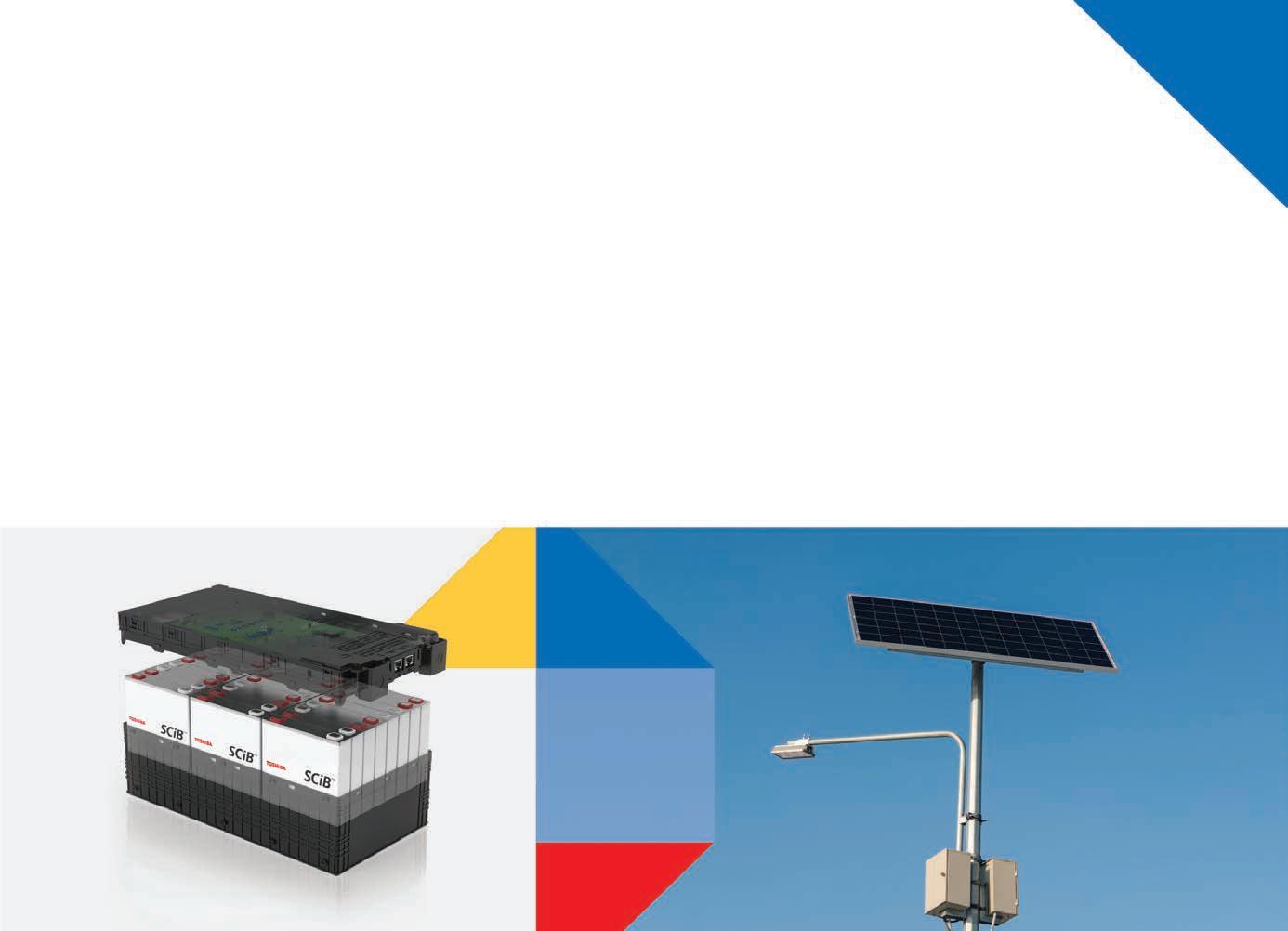
“We’re looking at AI capabilities to assist with coding through mass quantities of data, so that we can more efficiently, and more cost effectively, provide road practitioners with a much better understanding of where the problems are on the network,” McTiernan says. “With AI we can have wider and more frequent rollouts.”

TECHNOLOGY
‘No blame’ crash investigations do not impede on police investigations, instead they aim to aid the development of future infrastructure.





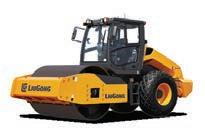



TECHNOLOGY SECURE LEVEL MEASUREMENT
THE UNIVERSAL VEGAPULS 6X MEASURES THE LEVEL OF LIQUIDS AND BULK SOLIDS RELIABLY EVEN UNDER THE MOST ADVERSE PROCESS CONDITIONS. ROADS & INFRASTRUCTURE SITS DOWN WITH VEGA PRODUCT MANAGER PHILIPP KETTERER TO LEARN MORE.
WHAT LEAD VEGA TO DEVELOP SUCH A SYSTEM?
Many users in the process industry have so far paid little attention to the topic of cyber security. Either because they still think it’s the IT department’s job or because they don’t feel directly threatened. However both these attitudes are a little negligent, here’s why.
For one thing, IT security should always be a joint task between IT and OT. And for another, digital networking is forging ahead rapidly in the process industry. Concepts such as NOA (NAMUR Open Architecture), MTP (Modular Type Package) or EthernetAPL (Advanced Physical Layer) are being
deployed more and more.
All of this opens up new avenues into the previously self-contained automation level and offers, at least theoretically, a convenient entryway for attacks.
WHAT ARE THE DANGERS OF DIGITAL NETWORKING?
Modern, integrated automation solutions simplify handling and make processes more flexible and efficient. However, due to this open-endedness, process automation engineers have begun to focus more and more on the issue of security.

Here, just one concrete number to emphasize the vulnerability: According to
the industry association Bitkom e. V., the German economy suffers a loss of around 203 billion euros every year through the theft of IT equipment and proprietary data as well as through espionage and sabotage. Especially problematic is the fact that cyber adversaries can be quite different in nature: They can range from individual ‘script kiddies’, to criminals or even nation states.
Such attacks are still rare in the process industry; however, operators of power plants, fuel tanks or equipment in the water industry have recently gotten a wake-up call. Because what is often neglected: Any attacks on IT can affect OT areas very quickly.
30 ROADS JUNE 2023
WHAT ARE THE ADVANTAGES OF WIRELESS COMMUNICATION?
Nevertheless, this new open-endedness offers numerous advantages for users. For example, level sensors provide important data across many different areas of industrial activity. Process data are thus available at all locations, allowing worldwide inventory management (Vendor Managed Inventory).
Sensors from VEGA, for example, have been supplying critical data to higher-level systems for many years, for example level data from road salt silos along motorways or production data from flour mills, for the purpose of optimising raw material logistics.

Motorway maintenance depots and mills can thus rely on their storage facilities being automatically filled with road salt or grain. Incidentally, VEGA started this development long before Industry 4.0 became a topic.
The development of wireless communication with Bluetooth has once again increased the use of such applications. Bluetooth makes adjustment and commissioning of sensors and controllers easier, which, in many cases, also helps avoid situations where accidents can occur.
No matter where the level data originates from – whether huge towering silos, external measuring points like distant
stormwater overflow basins, potentially explosive environments or complex, labyrinthine processing plants – VEGA sensors make it available where it is needed.
Wireless data transmission is also used to retrieve status information from the sensors, for example to report maintenance requirements or to request an update. Downtime can be significantly reduced this way.
Yet from a cyber security perspective, there are challenges: Such data is increasingly being bundled into production and maintenance systems so that it can then be further processed in the office or control room. This creates discontinuities between operational and security functions.

HOLISTIC SECURITY CONCEPT FOR VEGAPULS 6X?
For that reason, VEGA put great effort into achieving certification as per IEC 62443-4-2 while it was developing its new shooting star, the radar level gauge VEGAPULS 6X. This international series of standards provides a flexible framework for systematically assessing, evaluating and implementing security standards. Security requirements for hardware as well as software are defined by its guidelines. It is aimed at plant builders, plant operators as well as component manufacturers like VEGA.
The entire development process of VEGAPULS 6X was therefore geared to the IT security standard IEC 62443-4-2. It
of possible threats right from the start in order to identify weak points at an early stage and develop countermeasures during development.
All of this, by the way, had to do not only with the security of the device, but with a company’s entire production process. This work was supervised by the independent institution TÜV Nord, which put every measure to the test.
The safety measures start with the encapsulated electronics of VEGAPULS 6X, which prevents manipulation. Built in is also a so-called Defense-in-Depth strategy, i.e. a tiered security concept that consists of several IT security layers. The concept includes production equipment security, network security and the security strategies of the various system components.
For VEGAPULS 6X, it means protection against threats such as Data manipulation (violation of integrity), Denial of Service “DoS” (violation of availability) and Espionage (violation of confidentiality).
The instrument has additional security features like user authentication. Every VEGAPULS 6X is delivered with an individual device code and Bluetooth access code. The Bluetooth connections are encrypted using standardised cryptographic methods and offer the user the option to be deactivated again after the device has been configured.
It also includes Event memory (logging). VEGAPULS 6X records locking and unlocking processes in an event memory; successful as well as failed attempts. The functionality of this security function can be tested
roadsonline.com.au 31 TECHNOLOGY
Digitalisation means that more and more field devices are being networked with each other.
VEGA also follows the approach of simplicity when it comes to cyber security and supports operators on the web to secure plant operation.
by trying to unlock the instrument with an incorrect instrument code. This faulty authentication must then be recorded in the “IT Security” event memory. If the event memory is checked regularly, attacks or manipulation can be easily detected. There’s also additional features such as Firmware integrity checks. The software update package is encrypted and signed. This prevents unauthorised software from being loaded into VEGAPULS 6X. And also data backup for recovery. Using the DTM, the parameters of VEGAPULS 6X can be saved with the “create backup” function. HART-enabled control systems also provide the option of saving the parameters of VEGAPULS 6X.
WHAT HAPPENS IN A WORST-CASE SCENARIO?
When defending against a cyber attack, time is of the essence. All companies should make appropriate preparations, which include drawing up a clearly defined emergency plan to ensure that valuable time is not wasted if worse comes to worst. It also includes making plans on how to rebuild a secure system in case severe damage is done. At VEGA, the PSIRT –Product Security Incident Response Team – stands ready at all times to help. These experts continuously search for any vulnerabilities, provide assistance with updates and patches, answer customer questions and immediately take action in critical situations, for example if a user discovers a vulnerability. At the same time, VEGA works closely with CERT@VDE, an IT security platform for industrial companies,
in reporting and investigating vulnerabilities. For decades now, VEGA level sensors have been making it easier for users to monitor their industrial processes. With VEGAPULS 6X, the user doesn’t have to worry about the area of application, the technology involved, the frequency or version of the sensor – all it takes is just a few mouse clicks to put it into operation. VEGA also tries to make everything as simple as possible when it comes to cyber security.
It’s certainly true that VEGA cannot exempt the plant operator from all
attacker would have to get physically close to the application. That means he would already have to be inside the plant or facility.
But many people forget that an attack on the IT structure of a company always affects all the processes that depend on automation. It is therefore important that the sensors are suitably robust and hardened. And of course, direct manipulation of a sensor can also lead to unpleasant situations, for example if the overfill protection system on a tank were to be disabled.
WHERE DO YOU SEE THE GREATEST CHALLENGE?
Getting users to take this topic seriously – I don’t think they have, yet. It seems everyone wants to shift responsibility to the IT department. But the fact is, the IT people cannot keep an eye on every single sensor in an industrial plant.
For that reason, every user must develop an awareness of all the factors involved in reliable sensor operation – not just from the aspect of system security – but also the know how to deal with a cyber attack.
What is more: Protection against cyberattacks is not something users and plant operators can discuss one time and be done with – it’s a topic they’ll have to revisit throughout the entire lifetime of the plant.
“ADDITIONAL TIPS ON HOW TO MAKE A PRODUCTION SYSTEM EVEN MORE SECURE ARE PROVIDED IN THE SECURITY GUIDELINES DOCUMENT. USERS ARE THEREFORE OPTIMALLY PREPARED.”
responsibility; after all, cyber security is an ongoing dynamic process that requires constant attention. VEGA does, however, support the operator in this effort. This help includes: Encouraging the operator to apply the measures mentioned in the security guidelines, which enable him to use the sensor correctly and securely.
Additional tips on how to make a production system even more secure are provided in the security guidelines document. Users are therefore optimally prepared.
HOW GREAT IS THE DANGER OF A CYBER ATTACK ON LEVEL SENSORS?
In the public debate about cyber security, level sensors are certainly not in the focus, especially in the case of something like short-range Bluetooth operation, the
Just as they care for the plant and all the production equipment, they should also care for the sensors and, especially when it comes to cyber security, keep them up to date.
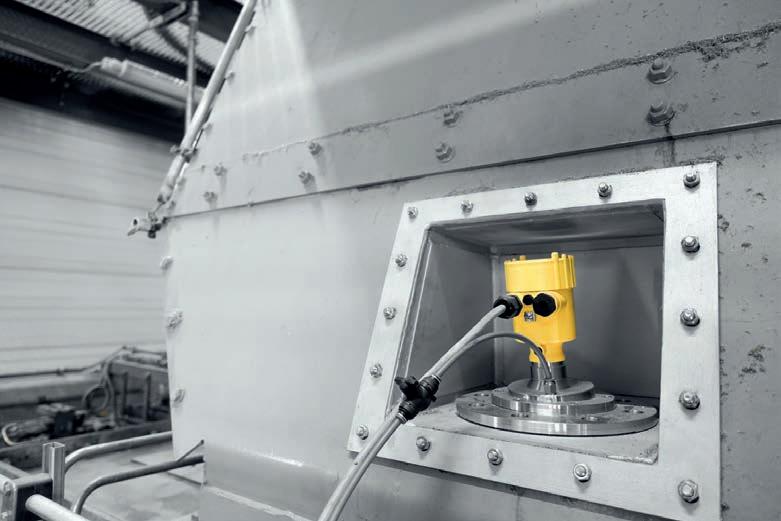
DOES THE IEC CERTIFICATION ONLY APPLY TO THE NEW VEGAPULS 6X RADAR SENSOR OR ALSO TO OTHER VEGA SENSORS?
Certification according to IEC 62433 is only possible during development, it has to be designed into the fabric of the sensors. This means it is not possible to obtain such certification retroactively.
Therefore, the certification only applies to our latest level sensor VEGAPULS 6X. But of course, all future sensor development will be undertaken in compliance with standard IEC 62433.

32 ROADS JUNE 2023 TECHNOLOGY
For users, wireless sensor communication with Bluetooth brings many advantages, but cyber security becomes a key factor.


NEW FAE ROAD PLANERS: MAKE WAY FOR A NEW ERA. A new era has begun for skid steer road planers. The FAE RPL/SSL and RPM/SSL are dedicated to resurfacing roads in preparation for laying a new layer of asphalt or concrete. The FAE RWM/SSL, with disc rotor is ideal for creating conduits to lay electrical, water, gas or fiber optic pipelines. Contact us to find the right FAE product for you: Ph. +61.3.9706.4088 - Toll free 1300.981.337 - info@fae-ap.com.au fae-group.com
THE GO WITH KOBELCO
TROY HAND, TRT CRANE SALES
AND
PACIFIC
ISLANDS MANAGER, SHEDS LIGHT ON THE BIG AND LITTLE DIFFERENTIATORS THAT SET KOBELCO CRANES APART FROM THE REST.
If you work in the infrastructure sector, odds are that you’ve heard of Kobelco cranes.
The company has been manufacturing equipment for just short of a century, using more than 80 years of experience to develop and distribute the latest in lattice boom crawler cranes, telescopic boom crawler cranes, and heavy-duty base crawler cranes.
The company now has more than 22 crawler crane models across the Kobelco range, each distributed in Australia, New Zealand, Papua New Guinea, New Caledonia and Fijiby Tidd Ross Todd

Limited (TRT) since 2020.
This range includes lifting capacities varying from 4.9 to more than 550 metric tonnes.
Troy Hand is well placed to evaluate the performance of these machines.
Before becoming the TRT Crane Sales and Pacific Islands Manager, Hand oversaw the operation of crane machinery as part of his own private business.
Hand says he’s seen plenty of cranes in his time, but when it comes to quality and reliability, Kobelco cranes stand out.
“I’ve been around Kobelco cranes for more than 20 years,” he says. “With Kobelco,
it always comes down to quality and reliability. These are just two of the biggest reasons why the crawler crane fleet sells so well.
“When you hand them over to a customer, people know what they’re going to get. It’s not just selling the product for the sake of it, because we believe in the product. You know that the crane is going to help build the client’s company and that they’re going to get 20 years plus of use from that asset.”
THE BRAND PROMISE
According to Hand, the quality and reliability of Kobelco cranes stems from the
34 ROADS JUNE 2023
“fit-for-purpose” design of each unit, as well as the flexibility each unit provides.
“If customers want, they can use units as just a lift crane, or they can use it as a piling crane as well. There’s definitely versatility there for customers.”
As part of this design, Kobelco prioritised the sustainability, as well as the productivity of each unit.
For ease of operation, each unit features simple control layouts, which are consistent across the range.
“Operators can hop in a 80-tonne crane, or a 550-tonne crane and the layout is the same,” Hand says. “The feel and smoothness of operation is second to none.”
This is thanks in part to Kobelco’s hydraulic control system, which can help to comply to specific jobsites.
Inside the cabin, operators can benefit from a limiter monitor, which helps to reduce the skill gap required to operate the machine. This includes a touchscreen panel, as well as easily understandable icons. Operators can also benefit from extra-wide windows that boost visibility.
Transportability is another key factor, with several units able to comply with transport regulations across Australia. Units can be adjusted to satisfy size and weight regulations required for local travel.
“[Kobelco] make the cranes very easy to transport across Australian roads. That ease of transport aspect is something that they definitely keep in mind with each of their designs,” Hand says.

contribute to sustainability?
Kobelco has implemented its ‘Gmode’ into new machinery that helps to reduce the fuel and energy requirement to carry out lifts on site.
One such element is the AIS (Auto Idle Stop) mode. This mode can save fuel by automatically stopping the engine once it’s entered an idling state, therefore reducing energy wastage daily.
Also included as part of Gmode is the G-Engine mode, which enables the machine to increase the displacement of hydraulic pumps. Allowing high-speed operation while reducing the maximum engine revs required, reduces the fuel consumption of the unit.
“Keeping up with emissions is an evolution which everyone must take. Doesn’t matter who the manufacturer is, it’s a standard evolution going green,” Hand says. “We need to have a look and see how we can take it to the next level.”
THERE, EVERY STEP OF THE WAY
Each Kobelco product sold in Australia is also backed by TRT’s network of dealers, service offerings and spare parts. Hand says the two companies have a strong agreeance and focus on sustaining quality while supporting customers in the long run.

“Both companies are manufacturers, so I think there’s a level of understanding there. Both companies also understand and work to overcome challenges such as supply chain and shipping issues,” Hand says.
TRT can provide 24/7, 365 days a year support for customers during the entire life of their cranes – Australia-wide – as part of a comprehensive package. The company has more than five decades worth of experience in servicing and repairing cranes.
“We’ve got some new models that are making their way across to Australia. Our domestic customers absolutely love our current models to death,” Hand says.
TRT can supply a variety of Kobelco units for the Australian, New Zealand and Pacific markets.
RECEIVING DELIVERY
Avopiling is just one of many companies who have benefitted from Kobelco machinery.
Current owner and Managing Director Avo Tevanian, says the company took orders for six cranes in 2022 alone.
“I’m a big fan of the Kobelco range, they are the ideal solution for the type of work
roadsonline.com.au 35 MACHINERY & EQUIPMENT
Kobelco cranes’ iconic green livery reflects the company’s commitment to sustainability.
Troy Hand (third from left) and Avo Piling visiting Kobelco’s Factory in Japan.
we carry out, and the reliability on these cranes is fantastic,” Tevanian says.

“I’ve operated them myself for many years, they offer outstanding performance in tough conditions. Reliability, and ease of operation would be the two main drivers that influenced our decision to invest in Kobelco.”
“The required lifts are getting heavier. A three or four-tonne lift was normal, then a 15-tonne become quite regular. Next thing is 40 and 50-tonne scale lifts were becoming more sought after and now we can rely on Kobelco to do this work for us.”

Another company which has placed it faith in Kobelco is Boddington Crane Hire. The company, specialising in dry hire equipment, has been operating Kobelco machinery for more than 12 years.

Manager Tom Hunter says the company
looked to Kobelco when it needed machinery with more capabilities for larger works.
“Recently we have sent equipment to areas in the remote Goldfields, Pilbara and Kimberley where you are a long way from support and downtime is not an option. We enjoy the challenge of putting our equipment and people to the test and keeping our clients happy no matter what the situation,” Hunter says.
“It was the reliability of the crane which comes from the top quality produced by Kobelco. For us, reliability and quality coupled with back up support has to be the top consideration in purchasing any new equipment.”
If you’re interested in a quote or would like to chat with Troy about Kobelco, you can contact him on +61423561111 or email troyh@trtaust.com.au. For more information on Kobelco you can also visit TRT’s website: https://www.trtaustralia.com. au/cranes/kobelco-crawler-cranes/.
To find out more contact your local JCB CEA dealer today.


Ph: 1300 522 232
www.jcbcea.com.au

&
MACHINERY
EQUIPMENT
Introducing the first and only skid steer with a telescopic boom the JCB Teleskid; a truly unique, versatile skid steer with endless possibilities. Now you can lift higher, reach further, dig deeper.
This revolutionary product is designed to suit all types of job sites meeting the need of multiple machines wrapped nicely into one. Combining the strength and safety of our single side boom with side door entry and extendable boom JCB has increased the versatility of the SSL-CTL world.
Troy Hand says the Kobelco difference is in the quality and reliability of the machines.
“FOR US, RELIABILITY AND QUALITY COUPLED WITH BACK UP SUPPORT HAS TO BE THE TOP CONSIDERATION IN PURCHASING ANY NEW EQUIPMENT.”








BUILDING GREENER ROADS. Australia’s leading provider of sustainable construction materials ASPHALT • AGGREGATES • ROADBASE • SAND VISIT: alexfraser.com.au CUSTOMER SERVICE: 136 135 CONSTRUCTION MATERIALS
BALANCED AND INTUITIVE
KOMATSU’S D85EXI-18 DOZER, EQUIPPED WITH INTELLIGENT MACHINE CONTROL,
CONTRACTORS WITH A PRODUCTIVE AND BALANCED OFFERING. PAT MUNRO, KOMATSU NATIONAL BUSINESS MANAGER – CONSTRUCTION, DISCUSSES ITS FEATURES WITH ROADS & INFRASTRUCTURE
According to Komatsu’s Pat Munro, Komatsu National Business Manager – Construction, the stability of the D85EXi-18 dozer is one of the main reasons why the machine is now one of the favoured options for land clearing and waste management tasks.


“One of the biggest comments that I get most of the time for this model is the balance. It offers a smoother ride because it’s not too front or back heavy, which is important if you’re reversing up a hill or pushing material stockpiles,” Munro says.
When it comes to Komatsu’s wider dozer range, the D85EXi-18 sits in the middle, capable of performing heavier works, while also providing the comfort and feel of smaller class machinery.
With 264 horsepower, along with an
operating weight of 29,520 kilograms, Munro says the D85EXi-18 dozer is most effective in heavy-duty works, across the construction earthmoving and waste management industries.
“This machine is well suited for heavy and robust land clearing types of works. A lot of people go to the smaller machines because it’s easier to move from property to property. But when they get to the larger machinery, they tend to the next size up,” he says.
INTELLIGENT CONTROL
The dozer forms part of Komatsu’s Intelligent Machine Control enabled machinery, providing boosts for productivity and efficiency.
Intelligent Machine Control (iMC) 2.0 is
the latest offering from Komatsu for both excavators and dozers. These features aim to provide automation for the operator, to increase the consistency and accuracy of passes.
One example is Proactive Dozing Control, a feature that enables the dozer to automatically cut/strip from the existing terrain. It can measure the terrain as it tracks over, in order to pre-plan its next pass. This feature can increase the machine and operators’ productivity by as much as 60 per cent.
Also included is Tilt Steering Control, which can automatically tilt the blade to maintain linear travel during rough dozing applications. This can help to reduce operator steering input by up to 80 per cent.
Munro says Tilt Steering Control, as well as Lift Layer Control, are both exclusive features of the iMC 2.0.
He adds that these features are both easy to implement into an existing project and have also been designed for older and new operators in mind.
“Once they understand how it works, people are really impressed as the proof is in the pudding,” Munro says.
“Recently, we had a customer day where I spoke to a second-year apprentice and asked if she could help me show people how to operate these machines. She’d never been in a dozer before, so I spent 15 minutes with her, showing her how to operate it and how it worked.
“For the rest of the day she could confidently show operators and even our general managers how to use these machines. So, it’s helping users be extremely good operators quite quickly.”
A WINNING MARGIN
The D85EXi-18 dozer supports what’s called
38 ROADS JUNE 2023
IS PROVIDING HEAVY LOAD
The D85EXi-18 dozer is supported by Komatsu’s Intelligent Machine Control (IMC) which provides a suit of automated features.
bulk and final trim dozing, a feature that can help the operator to achieve more consistent and accurate works.
“When a design is entered into the machine, the operator can set the dozer to a baseline to work to,” Munro says. “The machine can then work automatically to that point.


“This helps to achieve maximum blade capacity during every pass, without spinning and wearing out the undercarriage. It also stops spinning when idle, so you’re not burning diesel and not being productive. It helps the machine and operator to achieve a maximum production per litre of diesel with every pass.”
The automation also extends to the machines transmission, which is complemented by a lockup torque converter.
“In a hard pushing type application, where the machine is digging material or working hard, it’ll disengage the lock up. The torque converter helps to give maximum pushing power,” Munro says.
“Then when the machine is carrying or spreading material when the RPM and travel speed is increased, it will automatically lock up to direct drive to give you maximum fuel efficiency.”
the safety for both the operator, as well as ground crews.
The exterior of the dozer doesn’t include poles, cables or external components, complementing 360° visibility. The rear of the machine also contains a rear-view mounted camera.
“The visibility in the D85EXi-18 is market leading and we’ve integrated
ROPS (rollover protective structures) for more than 10 years in these models,” Munro says.
Safety and comfort were also large focuses during the development of the operator platform.
“Operator comfort is of a very high-level focus when it comes to the factory and manufacturing,” Munro says. “They’re also significantly quieter than other machines.”
Komatsu’s D85EXi-18 dozer is available now.
roadsonline.com.au 39 MACHINERY & EQUIPMENT
Komatsu’s D85EXi-18 dozer is well suited for large land clearing and construction works.
Komatsu’s Intelligent Machine Control features aim to increase the efficiency and accuracy of each pass.
BETTER TOGETHER
SANY HAS BECOME A DYNAMIC PRODUCER OF HEAVY MACHINERY IN AUSTRALIA AND ITS PARTNERSHIP WITH YELLO EQUIPMENT IS HELPING TO EXTEND THIS GROWTH. ANDY HOPCRAFT GENERAL MANAGER OF YELLO EQUIPMENT SHEDS LIGHT ON THIS DYNAMIC RELATIONSHIP.
With a growing international presence, now including Australia, and manufacturing facilities in the United States, Brazil, India, Germany & China – SANY’s powerful machines are driving construction projects across the globe.
A major part of SANY’s position in the Australian market is its partnership with Yello Equipment, a key distributer of SANY Australia. Andy Hopcraft, General Manager of Yello Equipment says that from inception around three years ago, the relationship between the two companies has been a great alignment.

“SANY is a global conglomerate, known around the world for quality products, the company have strategies that work for all environments and conditions – something we felt very aligned to,” Hopcraft says.
“Through our time as a SANY dealer, Yello has seen a lot of mid- and long-term visions with both the products and the brand, and, we see that SANY, conversely, look to us for those mid- and long-term strategies as well. So, the relationship is a very constructive and proactive one.”
2023 is set to be a strong year for SANY, with everything from excavators, wheeled loaders and rollers to cranes, forklifts and reach stackers – its product portfolio is only set to grow.
Hopcraft says SANY has stepped up to the mark with its quality and reliability, especially in Australia’s harsh environments.
“Good, robust, quality equipment is what SANY does best. Its product line for 2023 is nothing short of this,” he says.
“SANY has continued to move and adapt to local requirements, whether it be the European market, the American market, the Australasian market, etc. to give the best results to the companies and directly to the operators using the machines as well.
“SANY has established a footprint globally around its excavators. So, that product line is really at the forefront of 2023.”
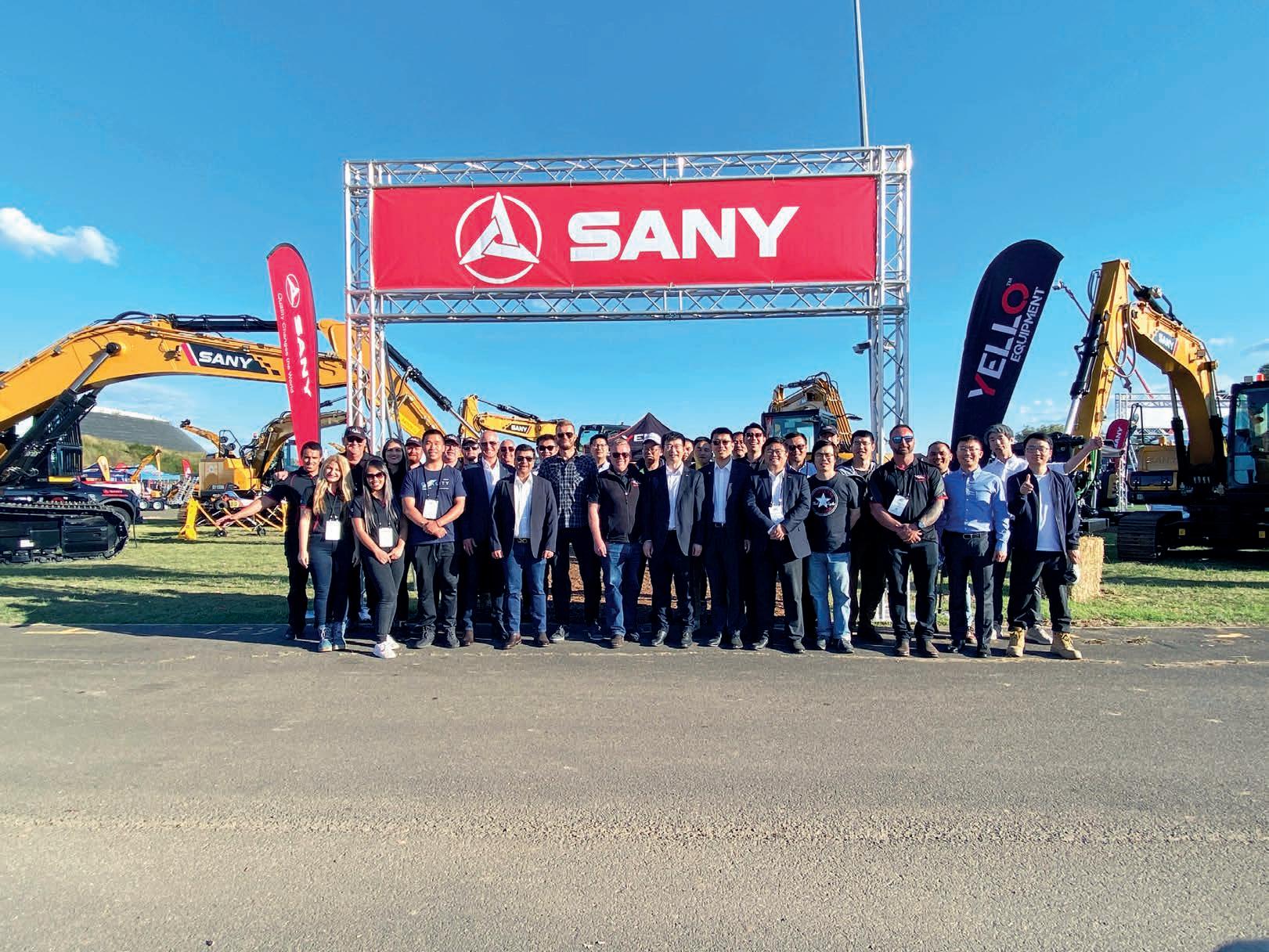
While excavators are a key SANY product to keep an eye out for this year, Hopcraft says there are other additions to the product portfolio that he’s excited about.
“Other machinery to look out for this year are the wheeled loaders and ground
compaction machines – rollers, graders and alike,” he says.
“We want people who come through Yello Equipment to purchase SANY products to know that for any quarry, civil construction, farm and agriculture work and many more applications, the SANY Excavators, wheeled loaders, and compaction machines are here to complement all customer needs.
“It’s great to know that, as a key dealer of SANY, Yello Equipment is a strong supplier of good quality machinery. We can say with confidence to our customers that both Yello and SANY are ready with the support and equipment they need for all project requirements.”
THE ROAD AHEAD
Some of SANY’s most stand out models have been in the civil construction space, notably the 5, 8, 16 through to 36 tonne specifications. Hopcraft says that SANY’s research and development team are always listening to what the operators and customers want. Therefore, the company has started working on some of their current models to suit demand.
40 ROADS JUNE 2023
The SANY and Yello Equipment team at the Diesel, Dirt and Turf 2023 event.
“The SY16C 1.7 tonne excavator is a perfect example of the current equipment being looked at for this reason. The SY16C is a very versatile machine, perfect for plumbers, landscapers, civil construction, you name it. It’s the right tool for the job,” he says.
“To make this Swiss army knife of a tool even more versatile, SANY are offering updates and like-minded machinery for the market.
“For instance, the SY16C conventional swing is now being complemented with the SY18U zero swing. Offering almost the same operating platform performance specifications, but in a zero-swing model.”
A great machine for operators with limited space, Hopcraft says the SY18U is now being complemented with a low-noise, lowemission electric version – the SY19E.
“As the world moves towards a more
sustainable and environmentally conscious future, SANY has kept up with the movement by developing electrically powered vehicles like the SY19E,” he says.
“SANY’s research and development team have made sure that all of its machines are ready for an array of applications, ensuring customers have the right tool for the job.”

As 2023 continues to ramp up, Hopcraft hopes to continue the strong relationship between SANY, Yello Equipment and its customers.
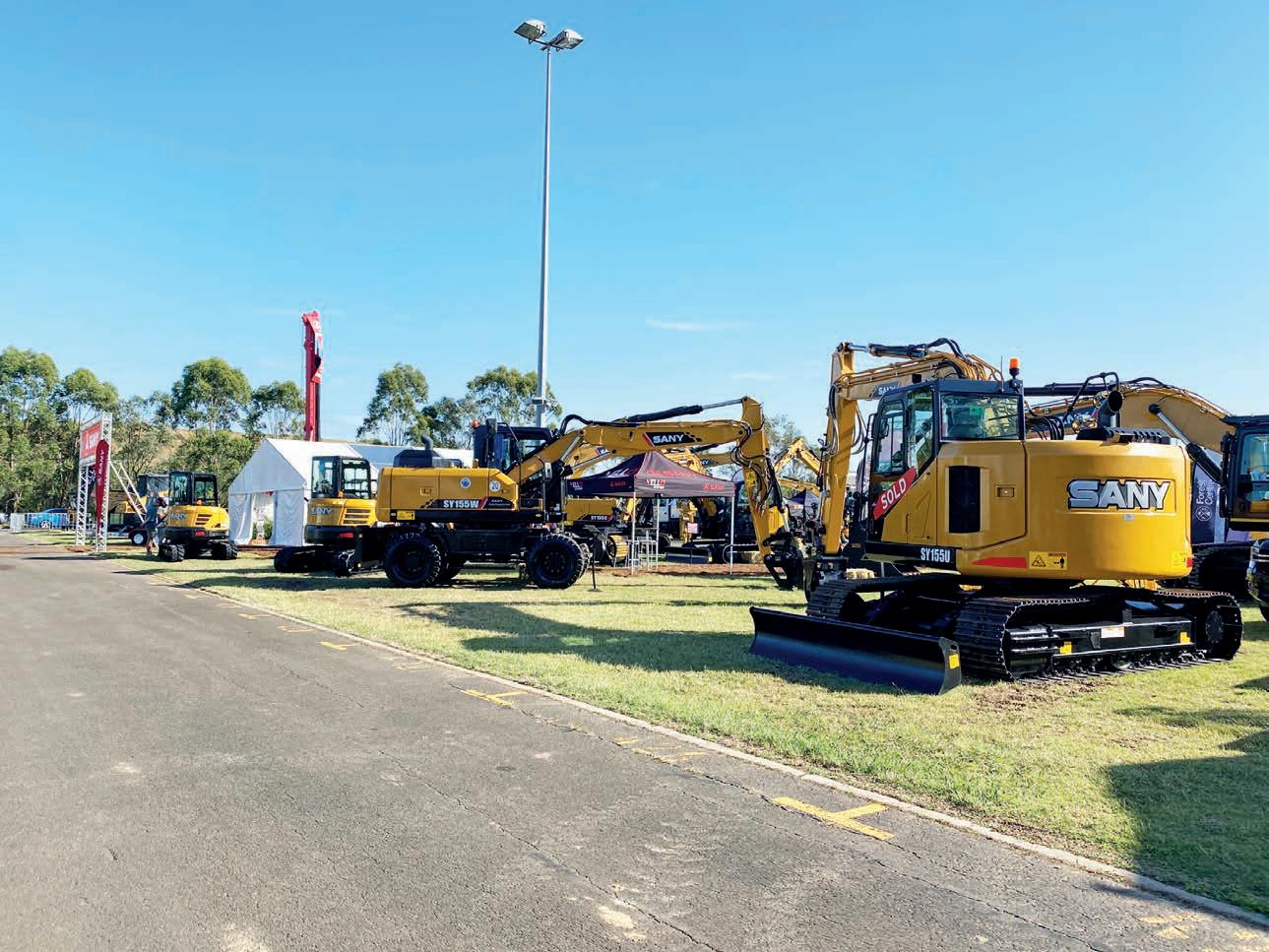

“The future is all about the medium- and long-term strategies that will allow us to be
proactive to the market,” he says.
“We want to build confidence for all our customers, so they know that SANY is here, supporting the local dealerships – the boots on the ground, salt of the earth people that are in the trenches with customers, committed to working through the positives and the negatives every single day. We are with you all the way.
“This year is another opportunity for us to show our customers the long-term commitment we have in making sure they get the most out of their SANY equipment and experience.”
roadsonline.com.au 41 MACHINERY & EQUIPMENT
“WE CAN SAY WITH CONFIDENCE TO OUR CUSTOMERS THAT BOTH YELLO AND SANY ARE READY WITH THE SUPPORT AND EQUIPMENT THEY NEED FOR ALL PROJECT REQUIREMENTS.”
Two of SANY’s highperformance wheel loaders.
SANY is known around the world for its durable range of equipment.






ON SITE
EFFICIENCY AND CLASS ARE THE CORNERSTONES OF WHAT JOHN DEERE IS KNOWN FOR – ITS DOZERS AND GRADERS ARE A PRIME EXAMPLE OF THIS. OPERATOR AND DIRECTOR AT EAST PILBARA EARTHMOVING, NATHAN MOULE, DISCUSSES HIS JOHN DEERE FLEET AND WHAT IT BRINGS TO EVEN THE TOUGHEST OF SITES.

always see that well, but the 670G grader has fuel running through the hydraulics meaning the operator can feel where the blade is. This makes our lives a whole lot easier,” he says.
Another member of Moule’s fleet is the 1050K Dozer – John Deere’s biggest dozer.
The 1050K is one of John Deere’s most durable dozers. With its new suspended double-bogie undercarriage that can absorb vibrations caused by rough operating conditions, Moule says the machine has always been a standout.
“85 per cent of the work that we do with the 1050K Dozer is exploration work in very rocky areas,” he says.
“For this work you need a specific type of machine, the previous ones we were using just weren’t cutting it. What really drew me to the John Deere dozer was how much power they have on the ground.
“When cutting into side hills and pushing out gravel, you need 100 per cent power on your tracks all the time – this is exactly

roadsonline.com.au 43 MACHINERY & EQUIPMENT
Operator and Director at East Pilbara Earthmoving, Nathan Moule.
what John Deere had to offer.”
Both the 670G/GP Motor Grader and the 1050K Dozer are powerful and reliable machines, but the consistency in performance doesn’t stop there.

This John Deere equipment is also designed for easy and accessible maintenance, which Moule says is a great feature, especially to maximise uptime.
“The mechanics we work with who service our John Deere machines are always commenting on how easy they are to maintain,” he says.
“The serviceability of all the John Deere products is something that really stands out. If anything does need to be fixed, our mechanics can get in and out quickly with the least amount of down time. A great feature if you rely on your machinery as heavily as we do.”
Not only this, Moule says, but the machines have proven themselves in the extreme heat.
“I’ve never had a John Deere machine overheat, even in the intense conditions we have up in Western Australia,” he says.
“Temperature can get up to 50 plus degrees Celsius, and when you’re working long hours, you can appreciate not having to constantly get out and check if the equipment is handling it.

“It’s also great having a comfortable cab and powerful air conditioning to get you through the day.”
Moule says from the beginning, John Deere’s machinery has stood up against
the rest. But it’s really the relationship with the company and its WA dealer, AFGRI Equipment, that keeps him going back.
“John Deere and AFGRI have always provided support when we’ve needed it,” he says.
“Because we are such a remote company, its important to us that if anything goes wrong with a machine, or we need something replaced/fixed quickly, we have someone to talk to that understands the urgency and that can help us in the most efficient way possible.
“Both companies have built a strong and reliable relationship with us, they always go above and beyond whenever we need something – whether it is maintenance
or equipment wise.”
According to Moule, John Deere equipment has continued to help East Pilbara Earthmoving get the job done right. He says the aim is to keep this momentum going.

“All of us at East Pilbara Earthmoving live and work on site up here in WA, so we have a lot of pride in what we do,” he says. “Our main goal is always to do the best that we can, and we know with the ongoing support from John Deere and AFGRI Equipment, we can do our best work for the community and beyond.”
To check out the range of John Deere construction equipment, visit www.deere.

44 ROADS JUNE 2023 MACHINERY & EQUIPMENT
John Deere’s 670G/GP Motor Grader hard at work.
The 1050K Dozer – John Deere’s biggest dozer.



Connecting talent with industry. powered by careerone hiring.roadsonline.com.au ADVERTISE JOBS TODAY & INFRASTRUCTURE
RED HOT MACHINE
THE PIEDMONT REGIONAL FIRE DEPARTMENT IN ITALY IS SET TO HAVE A NEW VALUABLE ALLY TO HELP FIRE CREWS. MARCO TRAVERSA FROM TRAVERSA MARIO SNC AND FEDERICO GRUPPIONI, FAE PRODUCT MANAGER, EXPLAIN THE CAPABILITIES OF THE NEW RCU-75 TRACKED CARRIER.
FAE’s RCU-75 tracked carrier has been used by the Regional Fire Department of Piedmont, a region in Italy, to help fight fires and operate safely in emergencies.
Marco Traversa, from Traversa Mario SNC, a long-time partner of FAE, says that Piedmont’s regional fire department had some very specific criteria when it came to equipment.
“They wanted a very reliable machine for intensive use. The territory that the machine will be working on has dense vegetation, which is very dry and extremely flammable due to the drought that has hit northern Italy in recent years,” he says.
“Working in hard-to-reach areas or on steeply sloping terrain requires special equipment that ensures user safety and operating efficiency.”
Traversa says the remote-controlled RCU-75 is a perfect fit for the job.
“Designed for maintaining vegetation in forested and roadside areas, the multipurpose machine can be used on hillsides and in forests to create fire breaks, clear disused industrial sites that pose fire risks, and for emergency intervention,” he says.

“The RCU-75 is the ideal choice for a fire station having to deal with this type of situation on a daily basis.”
Federico Gruppioni, FAE Product Manager, says the RCU-75 is remote controlled and has the options of interchangeable heads that can quickly and efficiently perform specialised tasks.
“This RCU-75 is equipped with the FAE BL2/RCU head and a forestry mulcher with a Bite Limiter rotor. However, the fire department also requested a snow blower attachment along with a winch – all vital in rescue operations and for securing precariously balanced vehicles or objects,” he says.
Gruppioni has been amongst the action, delivering and commissioning the machine and providing training sessions. He says FAE is excited about the machine being used by the fire department.
“FAE has been selling machinery for more than 20 years, we pride ourselves on professional relationships based on mutual trust and a shared passion for quality,” he says.
“That’s why we were totally committed and excited about this important sale, knowing we could offer a superior product. The customer’s specification called for FAE branded professional wood shredders, a snow blower and a forestry winch for use in securing vehicles and other objects – and that’s exactly what this machine offers.”
The RCU-75 and set of heads were delivered to the Piedmont Regional Fire Department in February 2023.
FAE Service deployed the machine and
46 ROADS JUNE 2023
The FAE RCU-75 tracked carrier is compact, yet powerful.
trained the firefighters on how to use it in a series of practical tests on trees and vegetation. The winch was tested by towing large objects, such as a fire department tanker, with great success and, following this, the snow blower was also successfully commissioned.
Gruppioni says the tracked carrier is compact, powerful and remote controlled – perfect for use in tough conditions.
“Powered by a 74 horsepower Kohler motor, it can shred timber and branches up to 15 centimetres in diameter and is fitted with a BL2/RCU head with a fixed-tooth rotor plus bite limiter technology,” he says.

“All for high output, even with low horsepower, thanks to the low power absorption.”
A key aspect of this model is its ability to work on steep slopes up to 55 degrees. The heavy-duty, steel-tracked undercarriage features a hydraulic variable track system with independent undercarriage frames, meaning it has maximum stability on rough ground.
The rubber belts are paired with a triple-flange oscillating roller system on the undercarriage, while the hydrostatic triple transmission optimises traction and attachment management.

The integrated technological system
electronic control unit, add up to high performance.
Gruppioni says the specifics of the tracked carrier is what makes it the best machine for the job.
“The RCU-75 is guided by a remote control, with a large 3.5 inch display for superior management of all the machine and head functions, not to mention customizable function keys,” he says.
“A 2.4 Gigahertz transmission frequency
ensures reliable communication. Optimally laid out and comprehensive controls, together with a balanced shoulder strap, make the FAE remote control unit ergonomic and easy to use.
“The result is high performance, long-term reliability, and simple, intuitive operation.”
Gruppioni says FAE is hopeful that the new RCU-75 will assist the Fire Department in many years to come.
“POWERED BY A 74 HORSEPOWER KOHLER MOTOR, IT CAN SHRED TIMBER AND BRANCHES UP TO 15 CENTIMETRES IN DIAMETER AND IS FITTED WITH A BL2/RCU HEAD WITH A FIXED-TOOTH ROTOR PLUS BITE LIMITER TECHNOLOGY,”
roadsonline.com.au 47 MACHINERY & EQUIPMENT
The FAE RCU-75 tracked carrier in its original color.
Equipped with a 74-horsepower Kohler engine, the RCU-75 is designed to work in the toughest conditions.
FILLING THE MARKET GAP
THE JCB POTHOLE PRO HYDRADIG IS A UNIQUE THREE-IN-ONE SOLUTION TACKLING ROUGH ROADS ONE POTHOLE AT A TIME. JCB CEA’S DEON COPE, AND STEPHEN GILLIES OF ROADWORX, SIT DOWN WITH ROADS & INFRASTRUCTURE TO DETAIL THE NEW PIECE OF EQUIPMENT.
Data from the Australian Local Government Association and Australian Road Research Board (ARRB) says 537 councils have suffered more than $3.8 billion in damage to their roads, leaving drivers frusrated and facing repair costs for damaged cars.
JCB is tackling this problem on a global scale with the JCB Pothole Pro – the newest addition to the company’s Hydradig range, available through its Australian equipment distributor, JCB CEA.

JCB CEA Product Manager Deon Cope says a gap in the market was first noticed in the United Kingdom.
“The initial design for the machine came about in the UK, following the pothole problem in smaller county areas,” he says.
“After looking at the lengthy process for repairing the potholes, we found people using different machines and varying techniques to repair the roads. Not only this, but there were many people working on the ground, dedicating multiple hours in poorly lit and dangerous conditions to get the work done.
“To counteract this, JCB came up with the
Pothole Pro solution, where it’s ideally one operator and one machine.”
Cope says the Pothole Pro is a machine that operators can trust.
“Some of the key safety features of the JCB Pothole Pro include the hydraulic cropping blade which eliminates the use of jackhammers, the high seating position in the cab which enables the operator unhampered 360-degree visibility to all four wheels and its ability to work safely in congested areas, operating in a single lane without causing danger to pedestrians or vehicles,” he says.
Chief Executive Officer at road infrastructure company Roadworx, Stephen Gillies, has put the JCB Pothole Pro to the test and agrees.
Gillies says that before the purchase of the Pothole Pro, workers would traditionally use a road profiling machine, hand jack hammering and a skid steer with a broom/bucket.
“Using the all-in-one machine we will notice improvements in many factors on the work site,” he says.
“Productivity is a noticeable improvement, moving from multiple pieces of equipment and manpower to a one-man operation has
helped to make our worksites more efficient.”
Roadworx is a multi-disciplined infrastructure contractor, with an appetite to be an early adopter investing in new technology, innovation and company acquisitions to deliver a diverse set of capabilities and experience to its core market . Its foundations sit in delivering infrastructure maintenance solutions to local councils, government departments, and public and private companies engaged in roading. In working with smaller scale local councils, to large contracting jobs with the New South Wales Government, Gillies highlights the importance of efficiency and safety while looking after the wellbeing of his 200 plus workers.
“With the Pothole Pro replacing multiple machines and many manual elements of the job, the work we are doing for clients is not just quicker but also safer,” he says.
“For example, using multiple machines and heavy handheld equipment can lead to potential accidents onsite, mostly through operator behaviour. The Pothole Pro replaces all of this on site, so the risk of this is substantially lowered.
48 ROADS JUNE 2023
Cut, crop and clean with just one machine.
“Not only this, but it also eliminates the potential for Repetitive Strain Injury that usually occurs through the repetitive use of a jack hammer, commonly used to repair potholes. The self-driving capability is also a great feature – the machine can reach speeds of up to 40 kilometres per hour and can drive from each job site without truck transport, reducing downtime and the number of workers and equipment required onsite.”
EFFICIENCY ON SITE
The JCB Pothole Pro is an easy to use, versatile and safe machine. It comes with a high seating position that enables unrestricted 360-degree visibility to all four wheels, allowing the operator to work in a single lane carriageway with confidence, protecting both pedestrians and vehicles.


The machine is also fitted with standard features such as 2/4 wheel and crab steer, reverse camera, LED work lights, reverse steer and a heated air seat. The machine comes fitted with LiveLink telematics which provides instant notifications when a service is due and critical alerts if there are any serious mechanical or electrical problems with the machine.
Cope says the true highlight of the machine is its three dedicated attachments to crop, cut and clean.
“The Pothole Pro can run a 600-millimetre patch plan on the front of the machine so that it can cut to the correct depth needed, up to 170 millimetres. This attachment has eight degrees of tilt either way and hydraulic
depth control with the option of either powered or floating tilt.”
Following this is the cropping process.
“This next step basically creates a clean, straight edge on the outside of where the hole was just cleaned out,” Cope says.
“The cropping tool has a 450-millimetre-wide blade; however, a variety of blades can be fitted if need be.
“The beauty of this attachment is that you can maximise the life of the pothole repair with the dedicated cropping tool, which provides a uniform hole profile.”
The last piece of the puzzle is the cleaning stage. Cope says this attachment helps to prepare the pothole in minutes.
“The 1200-millimetre-wide sweeper collector with dust suppression means the job is done quickly and efficiently,” he says.
“After the hole is cut, it is the cleaning attachment tool’s job to remove debris from the pothole. It then collects and dumps chippings into a truck or trailer.
“This finishes the job off seamlessly, significantly reducing the time it takes to prepare the road surface for re-laying.”
These three attachments on one machine mean other machines are replaced on site. According to Gillies, the all-in-one feature really stood out when making the decision to invest in the Pothole Pro.

“The tilting broom, chisel attachment and fitted milling plane for small profiling jobs are all fitted to the machine and do not require hitching and unhitching, saving us time and energy,” he says.
“JCB delivered on the expectation that all of these components would provide higher productivity, less labour and safety while offsetting the capital cost.
“The machine is safer and more reliable, providing less machinery clutter on site. In turn, providing higher revenue at a lower cost.”
The efficiency and reliability provided by the multi-use tool is made possible by the hydraulic components of the machine.
Cope says the difference between this piece of equipment and other machines is that the heavy componentry is in the lower frame, with the main control being the only thing on the rotating frame.
“This means one thing – exceptional stability,” he says.
Cope says the aim for JCB in the future is to further develop its hydraulic platform, while continuing to focus on being at the forefront when it comes to technology, ergonomics, functionality and safety.
“Just around the corner for JCB is development into electric solutions and a unique hydrogen combustion engine – all technology we are keen to see evolve and grow to meet market demand.
“As JCB continues to deliver solutions for companies like Roadworx, we are excited to be at the forefront of the industry with a solution that delivers real benefits to companies and consumers across the country.”
roadsonline.com.au 49 MACHINERY & EQUIPMENT
The JCB Pothole Pro maximises on-site performance.
The Pothole Pro provides solid repairs at a low cost.
CARING, SHARING AND DARING
COLAS IS CELEBRATING ITS 15TH ANNIVERSARY IN AUSTRALIA OF ITS ACQUISITION OF SAMI BITUMEN TECHNOLOGIES.
CEO OCEANIA THIERRY MADELON REFLECTS ON THE VALUES AND PRINCIPLES WHICH HAVE GUIDED THE ENTERPRISES’ SUCCESS.

In 2008, COLAS acquired SAMI Bitumen Technologies, adding to the company’s position as one of the leading providers of bitumen internationally.
This led to the creation of the COLAS Australia Group. The company has continued its expansion domestically, through the acquisition of numerous asphalt, spray sealing and quarry businesses across Australia and now has over 500 workers across 15 sites in five states.

In total the COLAS Group now spans a total of 50 countries and five continents.
As COLAS CEO Oceania Thierry Madelon recalls, one of the key steps was to establish a meaningful culture and values in the Australian business to support further growth.
“We have a training program called ‘COLAS University’, which is used to develop the leadership and management qualities of employees, while also identifying potential senior managers,” Madelon says.
“Most managers started at the bottom as a foreman or supervisor and worked their way up, so they know the company and their people.”
“As part of the program, a group was looking at what are the values that define the COLAS Group. It was a look into our foundation and who we are.”
The result was the development of the company’s values: caring, sharing and daring.
NURTURING EMPLOYEES AND CLIENTS
The value of caring incorporates a variety of aspects for the COLAS Group. The first and one of the most important to the sustained success of a business – Madelon says –is respect.
“For me, caring means first and foremost respecting our frontline employees, who get the work done, and the communities who are the people we work for,” he says.
“You have to remember to find ways to give back, beyond just doing what we do, which is connecting communities for a living.”
Madelon says COLAS Australia supports a variety of charitable organisations and initiatives as part of this ethos, giving employees the opportunity to support causes close to them.
One example is the Western Australian division of COLAS contributing to the Christmas Child program in Perth.
COLAS has also empowered Sunandha Rajaram, Group Human Resources Administrator, to assist the homeless in Sydney with food and clothing, even during COVID-19.
“When we found out we decided to support Sunandha’s initiative. I found it admirable because she was out there, with a mask on putting herself at risk to follow her calling,” Madelon says.
“We support a number of other charities,
50 ROADS JUNE 2023
COLAS new asphalt plant in Yatala, Queensland.
COLAS CEO Oceania Thierry Madelon.
including the Red Cross and the SES during the floods and fires.”
The COLAS Group is also a keen supporter of SARAH (Safer Australian Roads and Highways), which was founded by Peter Frazier following the tragic death of his 23-year-old daughter Sarah in 2012. The cause aims to improve road safety measures, increase awareness of the impact of traffic injuries and also create greater protections for emergency services attending road hazards.
Madelon says the caring ethos also extends to providing services and support for employees’ mental health.
“In our industry I think we’re doing a lot better than we used to on physical safety,” he says.
“I’ve recently read a stat that a construction worker is six times more likely to die from suicide than from an accident on site. So we’ve got work to do in this space.”
As a result, COLAS also supports Beyond Blue.
“In our industry, our crews operate autonomously, and play a critical role in their own safety, production and quality. So the companies that do well, are the companies looking after their people. Everyone matters.”
“That’s what initially attracted me to this industry.”
AIMING FOR THE FUTURE
Research and development and sustainability have long been a key focus for COLAS where DARING through innovation and experimentation is expected.
Products such as EME2 (high modulus asphalt which provides greater performance attributes) and ECO5 (high performance recycled content asphalt produced at lower temperatures) are the result of the COLAS Group’s international expertise and facilities.

“We’ve been recognised as an innovator for more than 90 years, bringing a number of products to the market,” Madelon says.
“SAMI has been instrumental in developing EME2 in Australia. This design is widely used to help reduce pavement thicknesses and lower the carbon footprint for delivering heavy duty pavements. SAMI also worked on the I-Brid binder which is specially designed for the Australian market, with a good resistance to hot weather and heavy workloads.”
The production of these products has also been boosted by further expansions
in COLAS’s manufacturing infrastructure. COLAS has established a new asphalt plant in Yatala, Queensland, during the COVID pandemic, a sign of the Company’s belief in the long-term potential of the Australian infrastructure market.
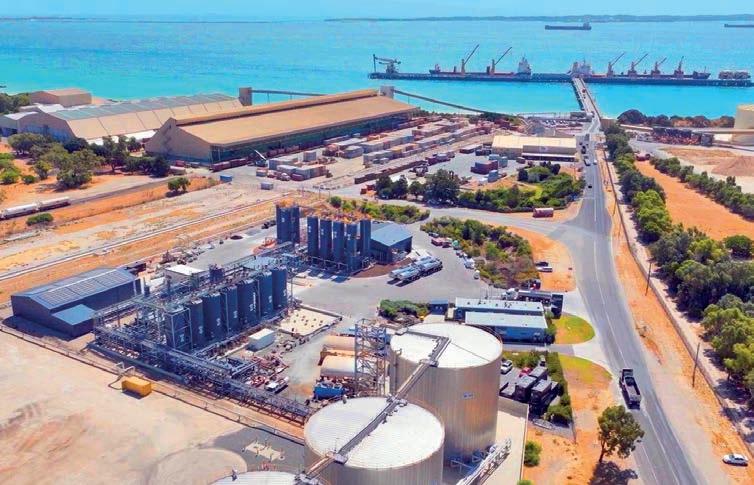

COLAS has also worked to commission a new CRB (Crumb Rubber Bitumen) plant to service remote and regional projects in Western Australia.
“Technical innovation is in our DNA. Being a company that’s capable of innovating, those are the things that define us,” Madelon says.
Madelon says the SHARING of technical information between COLAS Group subsidiaries and with Industry partners also supports further research and development. He adds that innovation can also lead to greater quality, improved performance and sustainability.
“When people purchase our products, we want them to have peace of mind. Sometimes we may have issues, but we don’t flinch away from problems, we fix them,” he says.
Madelon says the COLAS Group will continue to closely adhere to the values of caring, sharing and daring in the future, as the company eyes further expansion.
“I sometimes get asked ‘why are these values important?’ Our company is an old one, having been in business for over 90 years. We’ve been through a lot of recessions and problems relying on these strong values,” he says.
“For us, doing business ethically and having these values as our foundation is critical. We don’t go for the short-term gains, where we may put the future of the company at risk. That’s why it’s so important to us and what we are most proud of.”
roadsonline.com.au 51 COMPANY PROFILE
COLAS Australia has been responsible for the development of widely used sustainable products.
SAMI’s Kwinana import terminal and blending plant.
THE EXPERTS IN RISK MANAGEMENT
DONALD CANT WATTS CORKE DIRECTOR FOR INFRASTRUCTURE, LESLIE CHUNG, SHEDS LIGHT ON SIMPLIFYING AND REDUCING IMPACTS CAUSED BY CONTRACTOR INSOLVENCIES AND PROJECT BUDGET INADEQUACIES.
The unpredictable and at times erratic economy, in part caused by global impacts from COVID-19 and Inflation continues to heavily impact the construction and infrastructure industries.
The Australian Constructors Association (ACA) says the industry has seen price increases of up to 70 per cent over the last 12 months. A major contributing factor to the collapse of contracts and even some businesses. An issue for one of Australia’s largest industries.

The construction sector alone contributes eight per cent to Australia’s GDP, while also accounting for the most insolvencies per industry (ACA).
Leslie Chung, Director – Infrastructure Donald Cant Watts Corke (DCWC) says contractor insolvencies have risen, along with the growing pressures on business across the sector. More
work will need to be done to quell such wavering conditions.
“Insolvency has been a pretty hot topic as of late, considering the fact that a lot of housing and infrastructure builders have become insolvent,” Chung says.
“A number of factors affect this. Economic conditions are obviously a major one, economic downturns, recessions and changes in government policy can all impact the profitability of the construction industry. And when there’s faltering demand for construction projects, firms may struggle to secure new contracts and maintain a healthy cash flow for example.”
According to Chung, these challenges are often compounded by companies who have inadequate governance and risk assessment processes.
“Construction businesses are inherently risky,
due to several reasons, including financial risks whereby projects typically involve significant upfront costs, material procurement, equipment rental, and labour expenses. Delays, cost overruns or client disputes can impact cashflow and profitability. Fluctuating material prices due to inflation, currency exchange rates and economic downturns can all affect the financial stability of a construction business.
To add fire to the fuel is businesses may face project complexities: construction projects are often complex and involve multiple stakeholders. Managing these relationships, coordinating activities and addressing potential conflicts or delays can be challenging. Failure to effectively manage project complexities can lead to disputes, legal issues and worse of all foreclosure” he says.
52 ROADS JUNE 2023
“With unforeseeable factors, like ever changing climate change / inclement weather, contamination and more can potentially impact the projects timeline and budget. Companies which have unsophisticated management when it comes to governance and risk management can quite easily fall into insolvency due to these cashflow issues.”
THE SOLUTION
DCWC helps to mitigate these impacts by providing expert consultation, both prior and during challenges for contractors and consortiums.
The company is one of the nation’s largest providers of surveying and management services across a multitude of disciplines covering the infrastructure and construction sectors.
“DCWC has been a trusted advisor for decades,” Chung says. “Since the 1960s we’ve provided trusted, strategic, accurate and high standard advice to the industry. Whether it be building our Parliament House, NorthEast Link and Melbourne Metro Tunnel Rail Project.”
“Within our teams we’re always aiming to contribute to the wider society to make it a better place, particularly when it comes to built form to minimise such insolvencies and project budget inadequacies.”
DCWC has advisory firm capabilities in both the private and public sector to utilise its
intellectual properties, including escalation forecasting and strategic cost control services as part of its core offerings.
DCWC also adheres to Australian and international standards and best practice, including Australian Standard 36000 Risk Management Services Guidelines.
“Contrary to some of our competitors, we avoid just telling the client what they want to hear,” Chung says. “It’s about telling them the truth and helping them to rectify the issues and challenges at hand.”
“One thing that I believe that sets us apart is DCWC’s meticulous attention to detail and unwavering support to meet global best practices. We conduct extreme due diligence on projects. Mediocracy is overrated.”
Chung attributes the thoroughness of DCWC process to its collaboration with the client.
“It is our mantra to take our clients through a journey on every project. This ranges from roll plot run-throughs through to discussing inherent risk on projects,” he says.
He adds that DCWC’s services could be considered as both qualitative and quantitative.
to evaluate costs on projects. We use simulated risk management services to understand the contingency fund which should be allocated to a project,” Chung says.
“Every project needs to be assessed on its own merits, and any broad brush benchmark is only a guidance.”
“The industry is slowly picking up on success stories of innovative procurement strategies and risk mitigation strategies. I think that everyone needs to be part of that journey to educate themselves, so such mistakes won’t be repeated. That’s also where we come in as advisors, to help with that education.”
DCWC’s services were recently put to the test as part of works on the Geelong Line Upgrade, Waurn Ponds duplication, Stage Two.


Utilising its experience in infrastructure projects, the DCWC team’s estimated budget for the project was within one per cent of the eventual pricing. DCWC was also within one per cent of the contracting party’s tender price on a confidential Defence project.
“We help our clients along the entire journey. We aren’t just advisors, but also equal emotional investors,” Chung says.
“We’re full of experienced personnel who’ve built projects in the past, who truly understand the importance of productivity on site and the risks involved.”
When it comes to the future, Chung says DCWC is well equipped to support its clientele for challenges that the economy will present to the industry.

“Over the next 12 to 24 months there’s going to be a lot of budget and government pressures,” he says.
“We’re continuously involved in solving budgetary constraints and the toughest issues facing our construction industry presented to us, both in todays and tomorrows market.”
roadsonline.com.au 53 THOUGHT LEADERSHIP
Leslie Chung, Director –Infrastructure Donald Cant Watts Corke.
Donald Cant Watts Corke has provide expert consultation for varying types of infrastructure projects, including rail.
Donald Cant Watts Corke has recently demonstrated its expert service as part of works on the Geelong Line Upgrade.


www.nodigdownunder.com Brisbane Convention and Exhibition Centre 13-14 SEPT 2023 TICKETS NOW ON SALE Discover how trenchless technology is driving better outcomes for Australian infrastructure projects. REGISTER YOUR ATTENDENCE NOW! www.nodigdownunder.com nodigdownunder@primecreative.com.au #nodigdownunder PLATINUM SPONSOR GOLD SPONSOR SILVER SPONSORS BRONZE SPONSOR SUPPORTED BY CHARITY PARTNER OFFICIAL MEDIA PARTNER Australia
DON’T MISS THE VICTORIAN TRANSPORT INFRASTRUCTURE CONFERENCE

THE 13TH ANNUAL VICTORIAN TRANSPORT INFRASTRUCTURE CONFERENCE RETURNS

TO MELBOURNE AS VICTORIA’S BIG BUILD – THE $100 BILLION PROGRAM CONSISTING OF ROAD AND RAIL WORKS – POWERS AHEAD.
The two-day event will be opened by Victoria’s Deputy Premier and Minister for Transport and Infrastructure – Jacinta Allan, with a welcome address on Day two by Melbourne Lord Mayor Sally Capp.
Many Victorians are aware of the major construction underway across the State, particularly in Melbourne, where in 2022, 40 million hours were put into road and rail works, providing 20,000 jobs alongside 50,000 indirect positions. Last year also saw the first Metro Tunnel infrastructure become operational with the opening of the Anzac Station Tram Stop, and the Level Crossing Removal Project eliminated a further 25 dangerous and congested crossings.
Melbourne continues to garner international acclaim for its renowned liveability, but Victoria’s population has seen a staggering growth, spurring the State Government to build modern and reliable transport critical to the prosperity of the growing State. Victoria’s Big Build is part of the Government’s pledge to get “Victorians home sooner and safer” while supporting economic recovery.

Major construction projects underway across the city will be discussed at the conference, including the big three rail projects, Metro Tunnel, Airport Rail and Suburban Rail Loop. Delegates can also expect updates on the Level Crossing Removal Project and Major Road Projects Victoria will be on hand to deliver an address covering their ongoing projects and upgrades.
Topics covering community engagement, freight, logistics, and sustainable transport infrastructure will also be featured, including presentations by the National Transport Research Organisation and
ecologiQ recycling initiative.
Three flagship rollingstock programs, Next Generation Trams, X’trapolis 2.0 Trains and VLocity Project will be jointly discussed by the Department of Transport and Planning and Alstom. The Mallee Regional Innovation Centre will ensure representation for Victoria’s expansive rural region.
Inspired by The Women in Transport Program, founded by the Hon. Jacinta Allan in 2017, the conference will feature a special panel entitled “Women in Transport” that will highlight the Australian program aiming to address the gender imbalance in the transport sector. Panellists will share inspirational insights on how women are breaking barriers in the industry.
A second expert panel will delve into
the topic of Indigenous representation in transport infrastructure, highlighting the significance of incorporating First Nations perspectives and designs in major projects across road and rail. Panellists will also offer insights into cultural training opportunities, avenues for procuring goods and services from Indigenous suppliers, and engaging with traditional owners on major projects.
With designated networking sessions and delegate numbers expected to reach over 200, the conference will be bristling with discussion and debate during a significant period for Victoria’s transport sector.
Hosted by Expotrade Australia, the 13th Annual Victorian Transport Infrastructure Conference takes place over June 20
– 21 at the Melbourne Convention & Exhibition Centre.
roadsonline.com.au 55 EVENTS
The Victorian Transport Infrastructure Conference will discuss the state’s $100 billion project pipeline.
A PEEK INSIDE
CONSTRUCTION EXPO
ROADS & INFRASTRUCTURE PROVIDES A SNEAK-PEEK INTO THIS YEAR’S INSIDE CONSTRUCTION EXPO.
As Australia continues its transition towards a more circular economy, industry leaders from the construction sector have been voicing the need for the increased use of recycled material in major infrastructure projects.
According to Show Director Lauren Winterbottom, the circular economy will be an area of focus for the event, which is slated for 20-21 September 2023 at the Melbourne Convention and Exhibition Centre.

“We are specifically looking to showcase companies that manufacture solutions for the construction industry out of recycled products,” she says. “We know this is a component of many major contract tenders now, and one that will only grow.”
Winterbottom says this push for sustainability in construction is central to the event’s ‘Engineering the Future’ theme – one that will revolve around a showcase for the achievements and opportunities presented by Victoria’s Big Build.
“Victoria’s Big Build program is ploughing ahead with speed,” Winterbottom says. “Inside Construction Expo will provide a platform to explore these projects, and a forum to connect equipment companies with the contractors who have won tenders to work on these major infrastructure projects.”
One such project, the construction of the Mordialloc Freeway in Melbourne’s south east, is often held up as an example of how the Recycled First Policy can be implemented effectively.
According to Victoria’s Big Build, the project was responsible for recycling 570 tonnes of plastic waste into noise walls; laid 75 tonnes of 100 per cent recycled plastic draining pipes; used more than 321 tonnes of sustainable roadbase and asphalt – including more than 202 million bottles worth of recycled glass; and diverted 97 per cent of its construction waste from landfill.
Elsewhere, groups are working tirelessly to
boost the uptake of end-of-life tyre-derived crumb rubber in road construction.
Winterbottom hopes Inside Construction Expo can help play a part in showcasing the benefits of this push for circularity in construction, and keep the wheel of demand turning for recycled products.
“It’s important to us that the event is contributing to the future growth of the industry,” she says. “And it’s clear that in order for that to be the case, we need to ensure that companies providing these environmentally friendly solutions have a seat at the table.”
BACK ON SITE
In 2022 the construction industry faced its share of challenges – many of which could last through 2023 and beyond. Skilled labour shortages and supply chain disruptions caused by COVID-19 have forced the sector to adapt and evolve to keep pace with a booming national infrastructure pipeline.
Winterbottom says there is no better time for a new in-person event such as Inside Construction Expo, not only to provide a forum for discussion around these challenges, but to celebrate those who have overcome them.
“The past two and a half years have shown us that people value in-person events more than ever,” she says. “While virtual events helped to fill the void, they just can’t compare to a face-to-face networking opportunity.
“Inside Construction Expo will provide a forum to address some of the big challenges facing the construction and infrastructure industry, and to help ensure that the future of the sector is strong.”
The two-day event will feature more than 100 speakers across four streams, an awards gala, and more than 15,000 square metres of exhibition space, including a large construction equipment showcase – one Winterbottom hopes will turn some heads.
“We want to do everything we can to help connect our exhibitors with their target customers,” she says. “We’re always thrilled when exhibitors tell us they’ve sold a piece of equipment or signed a new supply contract as a result of their participation in an expo. It reinforces that we’re bringing value back to the industry, and helping it to grow.”
For more information, visit: www.insideconstructionexpo.com.au
56 ROADS JUNE 2023
The Inside Construction Expo will be on from 20-21 September 2023 at the Melbourne Convention and Exhibition Centre.
2023
NO-DIG DOWN UNDER 2023 A LOOK INTO
ROADS & INFRASTRUCTURE GIVES A GLIMPSE INTO THE 2023 NO-DIG DOWN UNDER CONFERENCE.
As less invasive construction becomes more popular, the call for trenchless technology has become louder.
No-Dig Down Under (NDDU), to be held on September 12-14, is the Southern Hemisphere’s largest trenchless technology event. Growing over the years it has become the second largest no-dig technology event in the world.. It provides a platform for key decision makers in the construction industry to brainstorm, explore and get involved in the world of trenchless technology.
No-Dig Down Under Show Director, Lauren Winterbottom, says NDDU is a must-attend event for everyone involved in the trenchless technology sector.
“This year the event theme is “Better Outcomes Through Trenchless,” she says. “As always, the event will focus on new technologies and products that will help make the industry more efficient, safer, and provide more benefits for both those within the industry, and the broader community.”
Organised in partnership with the Australasian Society for Trenchless Technology (ASTT), NDDU features a largescale exhibition, multi-stream technical conference, training, social program and the coveted ASTT Awards.

Winterbottom says NDDU is a great networking opportunity, the best chance for industry members to come together as one group and learn about the recent advances in the industry.
“The industry is focused on communicating the benefits of trenchless technology – for the environment with less disruption to wildlife, for the community with less disruption to roads and other infrastructure while making repairs or installations, and for the financial bottom
line with lower costs to complete major projects,” she says.
“It really is a ‘one-stop shop’ for all things trenchless.”
At NDDU this year, attendees can look forward to an array of opportunities not only at the event itself, but also prior to the conference.
Training courses will be presented by industry leaders from Australia and overseas and are set to be of high value to anyone who encounters trenchless technologies as part of their employment.
Overall, the technical program will invite and encourage speakers from around Australia and the globe to present papers covering case studies, new and emerging technologies, challenging projects and environments, industry skills and training, risk management and more.
Along with the more practical side of the event, three sponsored social functions will also be held, including the prestigious ASTT Gala Dinner and awards evening, on September 14, providing attendees with
networking opportunities in a variety of settings with industry professionals.
Some of the newest technologies in trenchless construction will also be showcased at the event. Attendees can expect to see KOR Equipment Solutions, CDE, OptionX Group, UHI Machinery, Sewer Equipment Company, Robb Carr (Platinum Sponsor), TRACTO Australia, Pipe Core, Vermeer Australia (Gold Sponsor), CEA, DCS Manufacturing and Kaiser Technology Pty.
SCHOLARSHIP OPPORTUNITIES
ASTT will once again offer ten utility and council scholarships for attendance at NDDU 2023.
ASTT is a non-profit organisation, representing organisations and individuals involved in Australia and New Zealand’s trenchless technology industry. Established in 1991, the society has grown from 35 members when it was incorporated, to over 200 today.
Membership is open to all who are concerned with the provision of gas, water, sewage, drainage, telecommunications and electrical services.
This includes consultants, contractors, material and equipment manufacturers, public authorities at all levels of government and those engaged in research and development for underground systems. Applicants for the utility and council scholarships must apply by Friday 14 July 2023.
No-Dig Down Under will be held from the 12-14 of September at the Brisbane Convention and Exhibition Centre.
For more information on the event, visit: www.nodigdownunder.com
roadsonline.com.au 57 EVENTS
Networking is an integral part of the event every year.

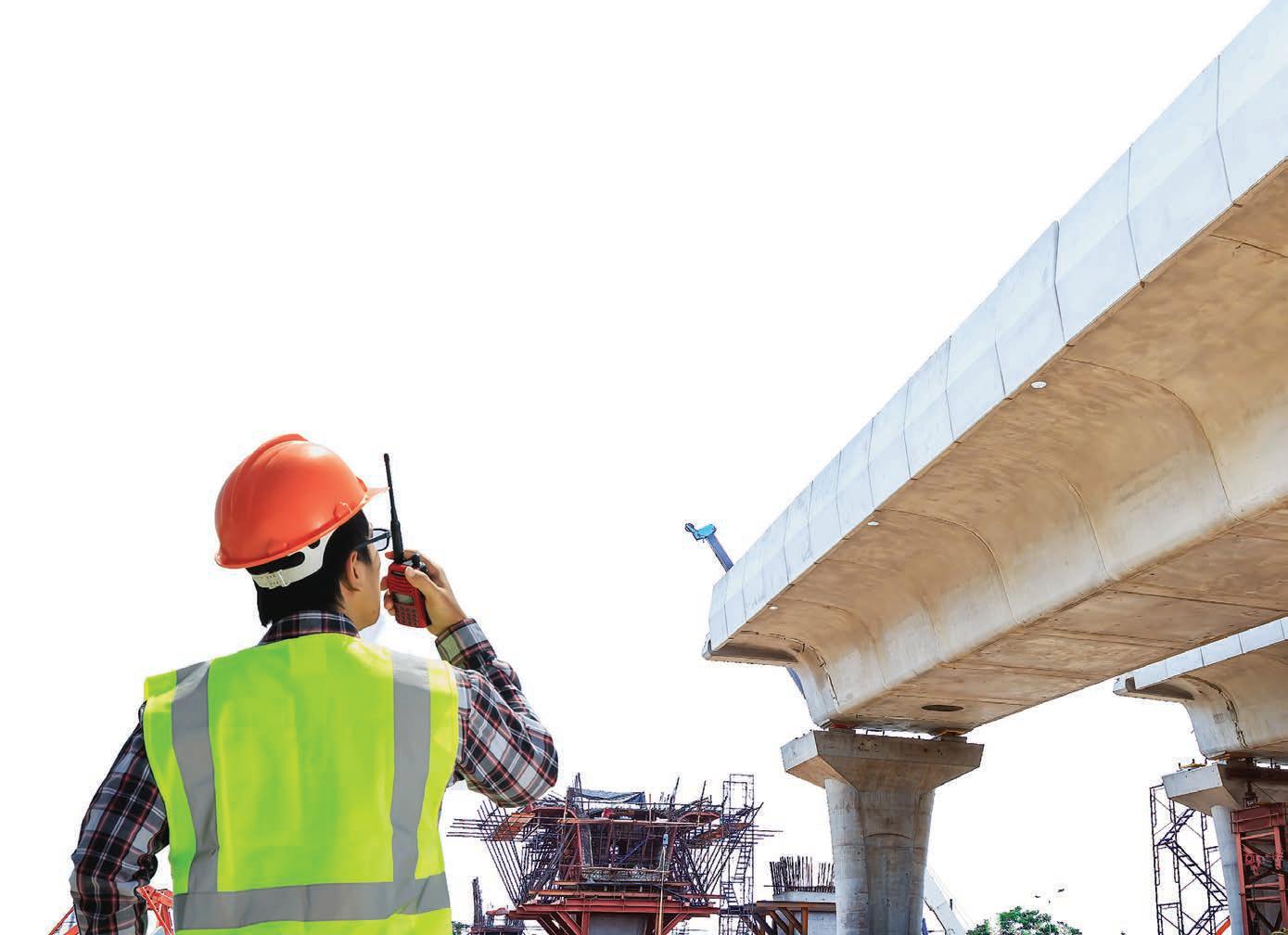








Melbourne Convention and Exhibition Centre 20-21 Sept 2023 CONFERENCE SPONSOR ASSOCIATION PARTNERS SUPPORTING SPONSOR EXHIBITION SPACE NOW ON SALE Melbourne’s leading construction and major infrastructure event insideconstructionexpo.com.au Get your share of major infrastructure projects
Infrastructure Sustainability Council

A REAL-WORLD PROBLEM
Slavery is an enduring human blight that encompasses situations where coercion, threats or deception are used to exploit victims and undermine or deprive them of their freedom.
The International Labour Organisation estimates that over 40 million people are victims of modern slavery globally. Of these, 25 million people were victims of forced labour, of which 18 per cent are in the construction sector.
The infrastructure sector has particularly high modern slavery risks due to extensive international supply chains and reliance on manual labour. Services such as cleaning, lower skilled trades, and materials production (including bricks, copper, PPE, bitumen, cement, and electronics) are known to have a high prevalence of forced labour practices.

Supply chain shortages pose higher pressure on labour demand, and organisations with multi-tiered supply chains face increased regulatory, reputational, financial, and operational risks related to modern slavery violations.
Stakeholders across the full extent of the value chain have a shared
responsibility to prevent modern slavery risks. To make a difference, however, investors, asset owners, designers, proponents, contractors, suppliers, and all relevant agencies must work in step around a common capability and an ongoing commitment to continual improvement.
Applying a sustainability lens that is underpinned by a commitment to collaboration, strong leadership, and effective management, is an impactful way to enact change.
DRIVING BETTER OUTCOMES
Since its formation over a decade ago, the Infrastructure Sustainability (IS) Rating Scheme has provided a framework that effectively supports infrastructure projects and operators to assess and address modern slavery across their supply chains. The Scheme enables organisations to significantly strengthen their response to modern slavery risk across the asset lifecycle.
Put simply, the IS Rating Scheme accelerates and assures cultural, social, environmental and economic
outcomes in infrastructure. Its focus on management systems and leadership, sustainable procurement, materials use, legacy, and workforce sustainability has enabled investors and operators alike to implement meaningful and longterm change with respect to addressing modern slavery, and to recognise and reward best practice.
One way that this is achieved is by outlining a suite of practical strategies which can be applied to infrastructure. For example, the publication/distribution via policy or public statements or adoption of a targeted risk-based approach to address modern slavery.
Organisations can seek to develop a strategy that investigates risks associated with the procurement of materials and this can include identification of potential risks, as well as disclosure of a modern slavery risk assessment on an organisational level.

PRACTICAL STEPS TOWARDS POSITIVE ACTION
The IS Council supports the development of a common capability and continual
roadsonline.com.au 59
INFRASTRUCTURE PROJECTS CAN HELP TO ERADICATE MODERN SLAVERY THROUGH A COMMITMENT TO SUSTAINABILITY, AS THE INFRASTRUCTURE SUSTAINABILITY COUNCIL WRITES.
The infrastructure sector has a leadership role to play in eradicating modern slavery.
Infrastructure Sustainability Council
improvement around the complex challenge that modern slavery presents for the infrastructure sector.
Organisations can take positive action towards the eradication of slavery by collaborating with industry partners to foster transparency of modern slavery risk disclosure, while building capability and a consistent approach to risk management.
Corporates can also embed positive action by embedding in the strategy the influence of modern slavery risk management through a policy framework. As well as testing the business response to realistic modern slavery risk scenarios, ensuring the response takes into account potential victims.
While both the Australian and New Zealand governments have regulations, effective modern slavery risk management requires an ongoing commitment.
Organisations must seek to make incremental improvements of management systems and processes that enable the assessment, mitigation, and potential remediation of such risks with a long term view.
COLLABORATING FOR IMPACT
In parallel with driving impact through the IS Rating Scheme, the IS Council is enabling collaboration around the eradication of modern slavery through its coordination of a Modern Slavery Coalition. This working group of diverse industry members was formed in 2019 in response to the introduction of the Australian Slavery Act with the aim to accelerate awareness and action.
Earlier this year, the IS Council released a Modern Slavery Impact Note – an industry resource that aims to drive short- and long-term action. Created in conjunction with the Modern Slavery Coalition, the Modern Slavery Impact Note outlines how businesses can develop and integrate an appropriate corporate strategy and effective modern slavery response through the IS Rating Scheme’s sustainability framework.
CHANGE IN ACTION
Companies across the construction and waste management industries are already using the IS Rating Scheme as a catalyst for action. Ventia,an essential
AND OPERATIONS, INCLUDING SUBCONTRACTORS.”
services provider and a coalition member have addressed management of modern slavery risk in cleaning subcontracted services.
Ventia’s Modern Slavery Policy mandates due diligence processes to identify and reduce modern slavery risks across its supply chain and operations, including subcontractors. Given the limitations on workforce visibility and capacity to implement control measures, Ventia conducted a modern slavery risk assessment for its cleaning subcontractors, considering factors such as service delivery location, pre and post-Covid cleaning service engagement, and comprehensive subcontractor evaluation.
The subcontractors were then required to complete a targeted modern slavery due diligence questionnaire, increase invoicing consistency and recording, and increase the frequency and robustness of site inspections, particularly in rural locations.
For more information on the Modern Slavery Impact Note and the IS Rating Scheme, visit: https://www.iscouncil. org/
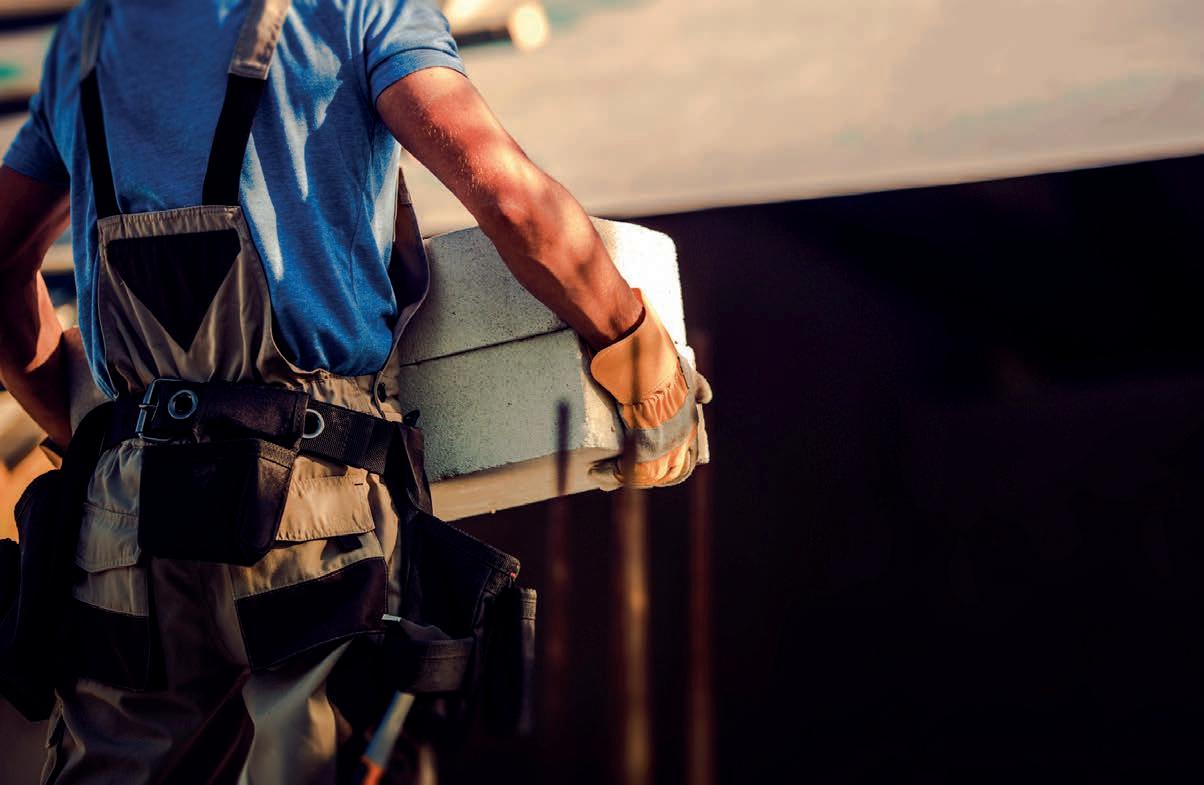
60 ROADS JUNE 2023
International supply chains and the sector’s high reliance on manual labour are some of the contributing factors to modern slavery risks.
“VENTIA’S MODERN SLAVERY POLICY MANDATES DUE DILIGENCE PROCESSES TO IDENTIFY AND REDUCE MODERN SLAVERY RISKS ACROSS ITS SUPPLY CHAIN
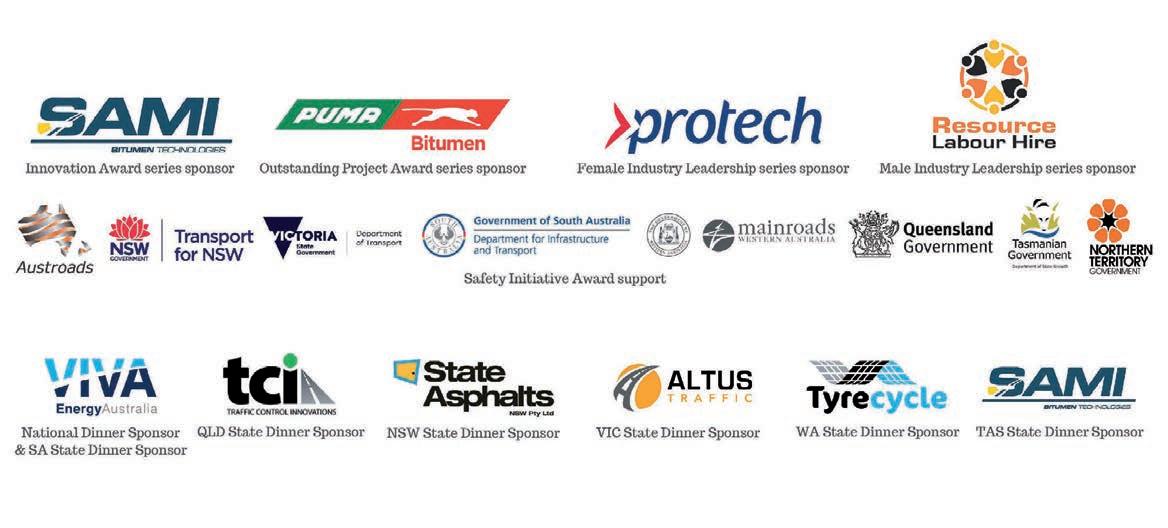
AUSTRALIAN FLEXIBLE PAVEMENT ASSOCIATION 2023 Industry Awards Nominations Open https://www.afpa.asn.au/2023-industry-awards-nominations/ 2023 State Industry Awards Series & Dinner Sponsors Limited Award and Dinner Sponsorship opportunities are still available https://bit.ly/3U588zL
BRIDGING
THE KNOWLEDGE GAP
THE AUSTRALIAN FLEXIBLE PAVEMENT ASSOCIATION HAS RECENTLY WRAPPED UP ITS 2023 INTERNATIONAL KNOWLEDGE TRANSFER TOUR. ROADS & INFRASTRUCTURE HEARS FROM EXECUTIVE DIRECTOR TECHNOLOGY AND LEADERSHIP, ANNA D’ANGELO, O N HOW THE TOUR IS HELPING TO BRING BEST PRACTICE TO AUSTRALIA.
Driving a culture of continuous improvement. This is one of the Australian Flexible Pavement Association’s (AfPA) core values that drives its representation of the domestic flexible pavement industry.
AfPA’s International Knowledge Transfer (IKT) tour echoes this focus. The IKT tour allows delegates to participate in a two-week program, which aims to gain new knowledge and best practice when it comes to technology, techniques and products that can improve Australia’s flexible pavement industry.
This year the tour went to the USA. It saw nine delegates meet with leaders in key areas, such as Federal and State Department of Transports, university and research organisations, contractors and industry associations such as NAPA (National Asphalt Pavement Association).

Anna D’Angelo, fPA Executive Director
The tour aimed to provide an insight into international best practice when it comes to sustainability.
Technology & Leadership, attended the tour and says it presented a unique opportunity to exchange ideas.
“AfPA has been conducting international study tours for many years in different destinations. They’ve been in Asia, South Africa, Europe and the United States, now for the third time,” D’Angelo says.
“Essentially the reason for having the tour is a knowledge exchange. It’s to find out how/what other countries are doing within their own industries, to see if there’s technology and knowledge which we could transfer back to Australia.
“It’s also important to build and maintain relationships with our American counterparts and to share our current initiatives.
The tour covered California, Alabama, Washington DC, New Jersey and Minnesota, with each gathering
discussing opportunities and techniques in sustainable pavement production.
Some of the key interest areas for these discussions included low carbon and reusable materials, pavement preservation and sustainability in procurement.
‘The IKT 2023, sustainable, smarter and safer construction works’ explored five key topics: sustainable best practice, low carbon and reusable materials, pavement preservation, binder and asphalt characterisation, and sustainability in procurement practices.
BEST PRACTICE
D’Angelo says two of the key opportunities is the continued improvement of crumb rubber, as well as the concept of a balanced mix design, which was explained as part of the tour.
“Crumb rubber is still extremely exciting. As you know, Australia has an increasing amount of waste tyres. So, it was great for us to have the opportunity to learn more and how it can be beneficial for the performance of roads,” D’Angelo says.
“Another thing that we learnt from our visit at NCAT (National Center of Asphalt Technology) was the ‘balanced mix design’ for asphalt mixtures. This is to design asphalt mixtures using performance tests. In many states across the US, they’re implementing the use of this balanced mix design.
“There is definitely an opportunity for us to work in this space.”
D’Angelo says she was also impressed by the work being done at NCAT in particular the work to quantify the life extending benefits of different pavement preservation treatments.
“We went to NCAT and looked at

62 ROADS JUNE 2023
BACK TO AUSTRALIA.”
some of the testing sections. We could see the different performance of some treatments when compared to others,” she says. “It was very interesting.”
The delegates also had the opportunity for the first time to visit the National Airport Pavement test facility and the pavement and materials research center.

“It was very exciting to view the full-scale pavement test facility and the heavy vehicle simulator used for airport research”.
Jeffrey Lee, Senior Principal Pavement Engineer – WSP, was one of the delegates on the tour. He says the IKT provided valuable experiences and relationships to benefit Australia’s flexible pavement industry.
“I would definitely attend the tour again. This is my second IKT. I was also part of the 2018 tour visiting countries in Asia (South Korea, Japan and China),” Lee says.
Lee adds that these experiences will
assist WSP’s sustainability efforts.
“Each state across the United States has very different approaches when it comes to pavement design, material selection and pavement preservation,” Lee says.
“Across the United States, there’s an increasing emphasis on sustainability and pavement preservation treatments. This will assist with WSP’s focus on Future Ready and design transport infrastructure to help our clients delivering Net Zero.”
Following the success of the program, D’Angelo says AfPA is now collating the learnings of each delegate to produce a report for wider distribution amongst

the industry. This will also be shared during future AfPA events.
“Amongst the delegates we created subgroups who were in charge of specific topics. Through these subgroups we’re aiming to create a report to share the learnings for those who weren’t able to attend,” D’Angelo says.
“This isn’t just for the lucky few, this is for the industry as a whole.”
She adds that AfPA will continue to run its IKT tours in the future, with plans for some tours to coincide with major conferences overseas.
For more information, visit: www.afpa. asn.au
roadsonline.com.au 63
“ESSENTIALLY THE REASON FOR HAVING THE TOUR IS A KNOWLEDGE EXCHANGE. IT’S TO FIND OUT HOW/WHAT OTHER COUNTRIES ARE DOING WITHIN THEIR OWN INDUSTRIES, TO SEE IF THERE’S TECHNOLOGY AND KNOWLEDGE WHICH WE COULD TRANSFER
AfPA’s Anna D’Angelo and delegates at the National Center for Asphalt Technology.
The tour also provided an opportunity to showcase the work being done by industry in Australia.
STRUCTURE CHANGE ASSOCIATION MEMBERSHIP GROWS FOLLOWING
National Precast’s record membership is a testament to the peak body’s valuable contributions to the precast concrete industry in Australia, and its continued growth bodes well for the industry’s future.
Precasters, suppliers, and professionals (such as architects, engineers, and head contractors) now have more cost-effective options for membership categories and fees, according to National Precast CEO Sarah Bachmann.
“We are delighted to already be experiencing a great response despite not even having promoted the new membership options yet,” Bachmann says.
The following are some of the recent new members of National Precast:

Sunset Sleepers (Precaster) – Specialises in producing engineer-certified reinforced concrete sleepers for various applications. https://www.sunsetsleepers.com.au/
Urban Cranes (State Industry Supplier, WA) –With a fleet of modern cranes and experienced operators, the company specialises in high-risk project delivery services to the construction industry. https://www.urbancranes.com.au/
Ironside (Provisional Precaster) – With its beginnings in multi-residential apartment construction, precast manufacturing has added a new dimension to the company’s capabilities. https://ironside.com.au/
PSA (National Industry Supplier) – Supplies consumables, lifting products and specialty services for the precast concrete industry. https://www.psa.com.au
Barrason’s Engineers (Professional Associate Organisation) – Specialising in precast engineering, Barrason’s Engineers provide
structural and civil design services throughout Australia. https://www.barrasonsengineers. com.au
Dinale Systems (National Industry Supplier) – Australian distributor for the NMB Splice Sleeve, a reinforcing bar connection system consisting of a cylindrical, ductile iron casting sleeve and a special high-strength, non-shrink grout filler. https://www.splicesleeve.com
Milwaukee Tool (Industry Partner) – The company’s high-quality, reliable tools and accessories that are designed to withstand the demands of tough job site environments are backed by its strong reputation. https://www. milwaukeetool.com.au
Novus Precast (Precaster) – Providing customised construction solutions using the latest precast technologies to the south-east Queensland market, the company is a qualityassured manufacturer of precast concrete elements. https://www.novusprecast.com.au
Aptus Concrete Connections (National Industry Supplier) – Innovative concrete connections that disrupt traditional construction methods provide faster, safer, and more efficient construction solutions. https:// aptus.systems
Total Precast Systems (Precaster) – With the ability to provide customized precast solutions to suit specific project needs, the company offers a diverse range of concrete precast products in northern NSW. https://www. facebook.com/totalprecastsystems/
Action Solution (Affiliate Precaster) – With a team of experienced engineers and designers, the company’s wide range of concrete precast products suit a variety of applications in WA. https://www.actionsolution.com.au
Hunter Precast (Affiliate Precaster) – Designs, manufactures and installs a diverse range of precast concrete products throughout the Newcastle and Hunter Valley regions in NSW. https://hunterprecast.com.au

Construc (Professional Associate Organisation) – Provides design, documentation and inspection services to the construction, civil and temporary works industry throughout Australia. https://www. construc.com.au/
ARP Training (Professional Associate Organisation) – Offers government-funded nationally accredited worker education to precast manufacturers and allied stakeholders based in Victoria. https://arp-training.com.au
64 ROADS JUNE 2023
NATIONAL PRECAST PROVIDES AN UPDATE ON NEW AND CURRENT MEMBERS.
National Precast’s member update features companies from right around Australia.
PIPE CAPACITY GROWS IN THE WEST TO MEET DEMAND
Longstanding Master Precaster MJB Industries is one of the leading Western Australian manufacturers of high quality concrete pipe and spun liners. Its only bi-directional pipe plant is operating at capacity, with a production schedule that has been booked several months ahead.
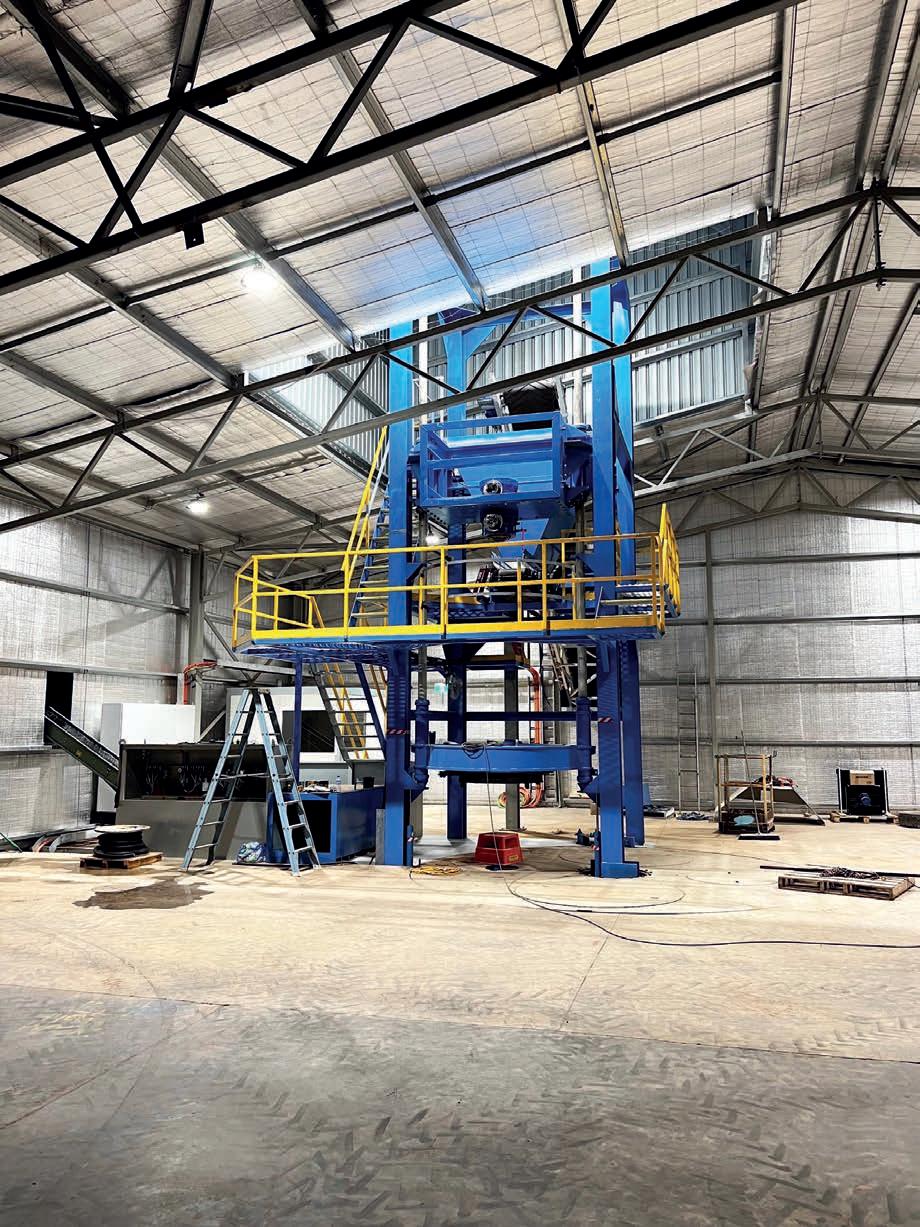
Because the supply shortage has disrupted the precaster’s clients and caused project delays, the company made a decision in early 2022 to install a second pipe plant.
According to National Precast CEO Sarah Bachmann, this comes as welcome news to head contractors.
“MJB has an impressive and long track record of reliably supplying the Western
Australian market with reinforced concrete pipes. In fact, they were the first of our members to attain the Master Precaster membership status,” Bachmann says.
Reinforced concrete pipes are renowned for their ease and safety of installation and their durability.
“They provide an excellent return on investment over the long haul,” she adds.
Work started on the new plant in July 2022 and has an expected completion date of June 30 2023.
MJB’s Director Kim Hovey is excited about the increased capacity the new plant will deliver.
“We expect we will be able to double our production with this new plant. That comes as great news to our clients who have had long wait times on pipe supply for several months now. It’ll certainly help them to stay on track with project timelines,” Hovey says.
The company has faced challenges itself in building the new plant, with long lead times on sourcing parts and components, due to continued and ongoing manufacturing and freight disruptions. Despite the delays, the company has –where possible – sourced local materials to ensure the timely completion of the plant. Bachmann says that not only will the new plant help the manufacturer stay competitive, but it will also create new employment opportunities and boost economic growth in the Australian market.
roadsonline.com.au 65
THE AUSTRALIAN DEMAND FOR REINFORCED CONCRETE PIPES IS AT AN ALL TIME HIGH. ONE NATIONAL MASTER PRECASTER HAS RISEN TO THE OCCASION
According to National Precast, the global concrete pipe market is expected to reach an estimated $28.8 billion by 2027 amid a national infrastructure boom and skills shortage.
“WE EXPECT WE WILL BE ABLE TO DOUBLE OUR PRODUCTION WITH THIS NEW PLANT. THAT COMES AS GREAT NEWS TO OUR CLIENTS WHO HAVE HAD LONG WAIT TIMES ON PIPE SUPPLY FOR SEVERAL MONTHS NOW.”
CONTRACTS IN BRIEF
ROADS & INFRASTRUCTURE PROVIDES AN UPDATE ON SOME OF THE CONTRACTS AND TENDERS
QUEENSLAND
Contract awarded for $274 Haughton Pipeline Project stage two
BMD Constructions and DJ MacCormick
Contractors have been awarded a contract for works on the $274 million the Haughton Pipeline Project Stage Two in Queensland. The Haughton Pipeline will help deliver a reliable water supply for industry and residential growth for the Townsville region. Stage one of the Project, completed in June 2020, saw approximately 36 kilometres of the pipeline constructed between the Haughton River and the Ross River Dam. Stage Two will add approximately 28 kilometres of pipeline extending to the Burdekin River. Jointly funded by Townsville City Council and the Queensland Government, the investment for Stage Two is $274 million, with $195 million of this contributed by the Queensland Government. Work on Stage Two of the project is expected to commence in mid-2023 with commissioning scheduled for mid-2025.
Georgiou awarded $425M Coomera Connector package

Georgiou Group, in a joint venture with sustainable infrastructure company Acciona, has been awarded the Coomera Connector Stage One North package for Queensland Department of Transport and Main Roads. The Coomera Connector Stage One package is a four-kilometre-high speed dual carriageway, including six bridge structures and localised intersection upgrades at each end of the project, Shipper Drive and Helensvale Road, in Queensland’s south-east. Funded by the Queensland and Australian governments, the full Coomera Connector will ultimately be a 45-kilometre high-speed, north-south transport corridor connecting the Logan Motorway and Pacific Motorway interchange at Loganholme and Nerang-Broadbeach Road in Nerang. The Coomera Connector is south-east Queensland’s largest road infrastructure project and is set to meet the rapidly growing region’s future transport needs while enhancing safety and improving travel times between Brisbane and the Gold Coast.
Hansen Yuncken awarded major Cairns
Hospital expansion
The Cairns Hospital Expansion project has reached a major milestone, with Hansen Yuncken being awarded the tender. The project, which will deliver an additional 96 beds for the Cairns and Hinterland region, includes 64 beds at Cairns Hospital and a new surgical centre.
The new surgical centre will be adjacent to James Cook University’s Cairns Tropical Enterprise Centre (CTEC), which will form part of the Far North Queensland Health Innovation Precinct, allowing for stronger linkages for teaching, learning and research. The site for the new surgical centre, on the corner of Charles and Digger Streets in Cairns North, is also close to the Cairns Hospital campus. The $250 million Cairns Hospital Expansion will create more than 610 jobs during the construction phase. Also underway at Cairns Hospital is a new $70 million mental health unit featuring a total of 53 beds, including a 10-bed mental health intensive care unit. Works are also continuing on the $26.5 million Cairns Hospital Emergency Department expansion to deliver additional capacity, a dedicated x-ray suite, refurbished resuscitation areas and additional procedure rooms. The first stage of the Emergency Department expansion is expected to be open in June 2023, with the full project due for completion in early 2024. The Cairns Hospital Expansion project is expected to be completed in the first half of 2026.
NEW SOUTH WALES EOI’s close on Sydney Metro West tenders
The Sydney Metro West project, beginning in 2020, is set to transform Sydney, doubling rail capacity between the two Central Business District, linking new communities to rail services and supporting employment growth and housing supply. Sydney Metro West is a new 24-kilometre metro line with stations confirmed at Westmead, Parramatta, Sydney Olympic Park, North Strathfield, Burwood North, Five Dock, The Bays, Pyrmont and Hunter Street in the Sydney CBD – expected to create about 10,000 direct and 70,000 indirect jobs during construction. Expressions of interest on a number of contracts as part of the Western Tunnelling package have now closed. They include; the supplying and installing of access stairs, pre-ground grouting prior to excavation, supplying and installing edge protection and portable grout stations. All of which play a part in the perpetuation of the Sydney Metro West project. Applications for the tenders closed on 14 and 15 May 2023.
VICTORIA New contracts for zero-emission bus network in Victoria
The Victorian Government is set to deliver new metropolitan bus contracts that support the state’s transition to a zero-emissions bus
network, expected to provide more reliable services to Victorians. Under the recontracting process, the market will be asked to submit proposals on how to boost passenger experience, deliver network and operating efficiencies and optimise the transition to zero emissions buses, building on the Government’s $20 million, Zero Emissions Bus (ZEB) Trial. The trial is expected to transition around 4000 diesel buses in the state’s public fleet, including around 2200 in regional Victoria, to zero emissions. The trial is also fostering local industry partnerships – such as with energy providers and manufacturers – that is said to be needed to achieve the transition across the state. The government is set to support existing and new operators through the transition to the new contracts, which will commence on 1 July 2025. The new contracts are expected to bring consistency to commercial arrangements across the metropolitan bus network, in line with the 10-year contracts other operators signed in 2018 and the Metropolitan Bus Franchise signed in 2022.
NEW ZEALAND
McConnell Dowell links up with Built Environs for Auckland Airport works
McConnell Dowell is working with the vertical building arm of the Group, Built Environs, on the development of the Auckland International Airport Limited (AIAL) facilities, New Zealand. Built Environs was awarded the Enabling Works for the WP2 Western Terminal Project in December 2022 and McConnell Dowell is completing the civil work scope. The contract is part of the Airport’s infrastructure investment plan to combine the domestic and international terminals and provide for a future shift to mass rapid transit. It builds on other projects the two companies have completed together, like the Puhinui Train Station, also in Auckland. The works include the relocation of the existing parking areas and the construction of a new trucking route for the western terminal. The team began the enabling works in February 2023 and is expected to complete this stage in the middle of 2023.
66 ROADS JUNE 2023 CONTRACTS & TENDERS
RECENTLY AWARDED OR PUT TO MARKET ACROSS THE AUSTRALIAN AND NEW ZEALAND INFRASTRUCTURE SECTORS.
INNOVATIVE SOLUTIONS FOR PORTABLE ENERGY
Built to withstand a variety of conditions the Atlas Copco range of lighting towers are robust and offer unrivalled efficiencies ensuring they are both reliable and can operate for an extensive period of time.
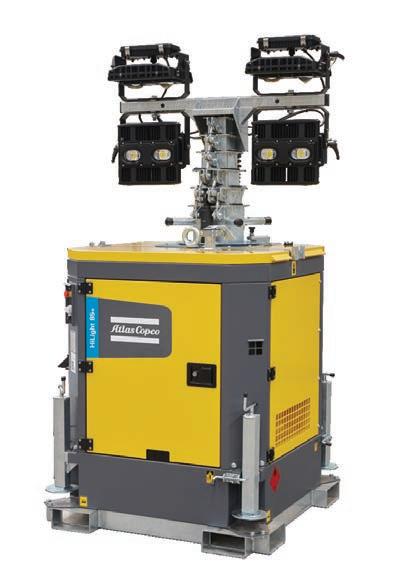

• Fuel efficient, ensuring longer running hours
• Specially designed directional optics offering incredible light distribution
• LED HiLight towers achieve up to 6.000 square-metres of light coverage with an average level of 20 luxes
• A life expectancy of more than 50.000 hours

• Aluminium casting, providing heavy duty protection
Small Asphalt Rollers Compact
and Smart
DYNAPACS SIXTH GENERATION SMALL ASPHALT ROLLERS - READY TO ROLL


Dynapac’s sixth generation CC1300VI and CC1400VI small asphalt rollers are designed and built to meet the construction industries ever evolving and tough conditions. The new design has resulted in a robust, comfortable and modern machine that still achieves the market leading compaction results that Dynapac is renowned for.
The new generation has a unique cross mounted engine providing exceptional access to engine and hydraulic components. This new engine concept and the slideable operators seat combine to increase visibility to drum edges and the greater worksite. High vibration frequency, offsetability of the drum, high efficiency eccentrics and options such as edge press devices and chip spreaders all improve compaction efficiency and versatility.
SPEAK TO OUR TEAM TODAY FOR AVAILABLE FINANCE OPTIONS!
782 www.atlascea.com.au
PH: 1800 733
Your Partner on the Road Ahead PROUD DISTRIBUTOR
dynapaccea.com.au 1300 788 757

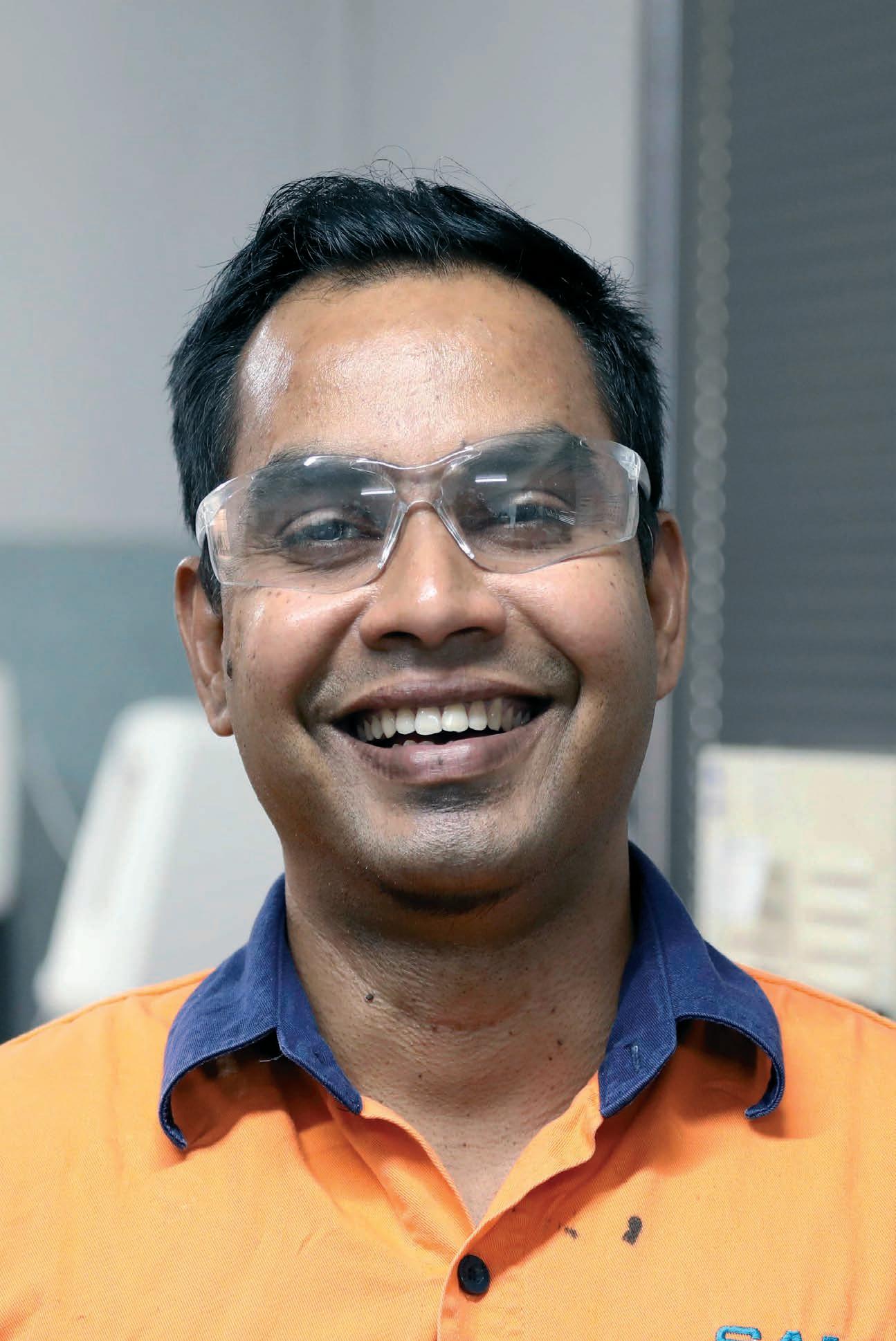
Innovative road surfacing products and technology sami.com.au























































































































































